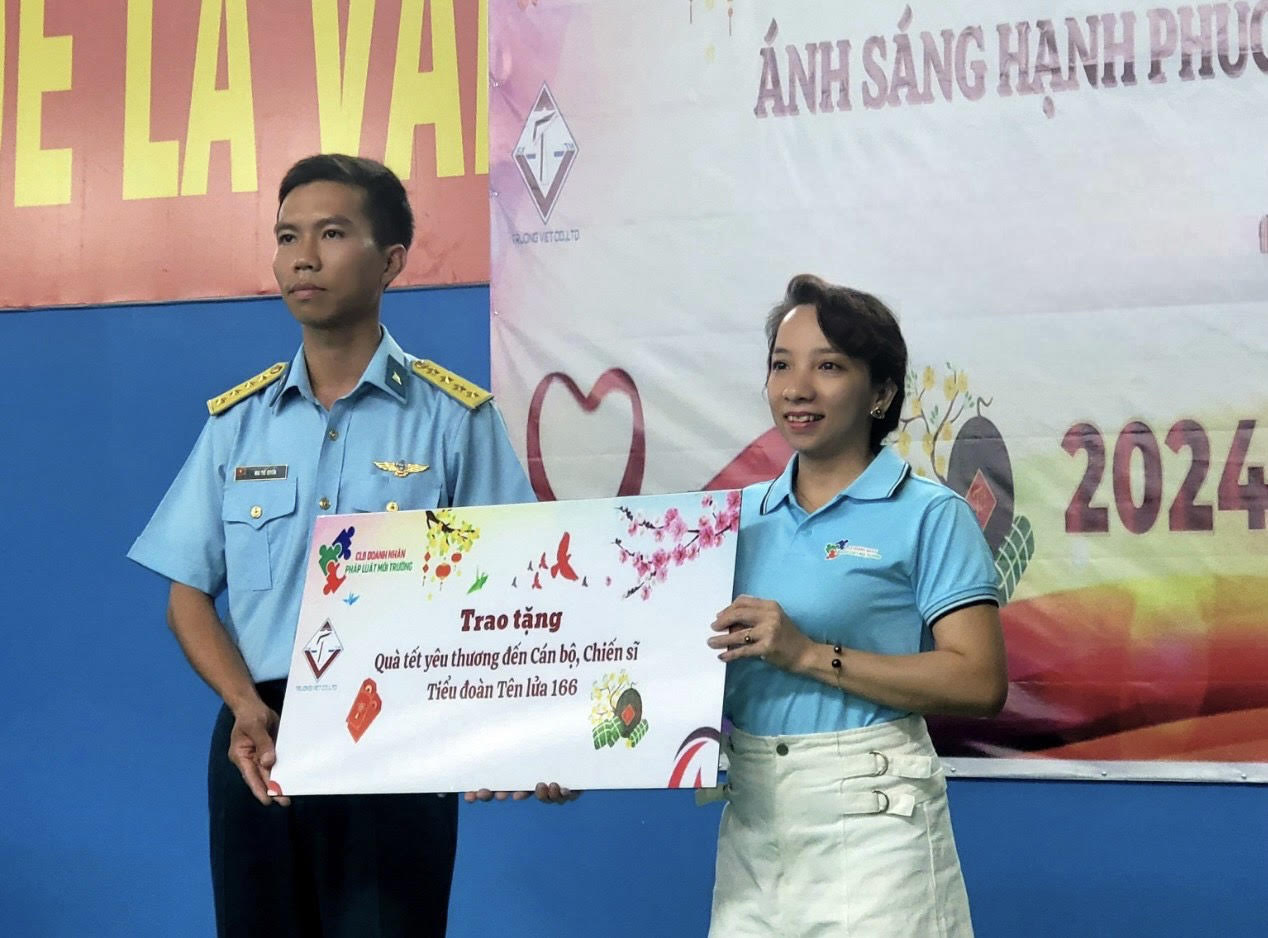Ban biên tập Chuyên trang Quản lý Môi trường, Tạp chí Môi trường và Đô thị Việt Nam trân trọng giới thiệu tới quý độc giả Công bố quốc tế lĩnh vực môi trường số 02-2024.
Về quản lý môi trường
– Vai trò của truyền thông và nhận thức về nguy cơ đại dịch đối với ý định hành vi du lịch vì môi trường: Những phát hiện từ PLS-SEM và fsQCA.
– Nghiên cứu thay đổi toàn cầu cần sự hợp tác quốc tế.
– Khám phá cơ chế khuyến khích định hướng hiệu suất dài hạn để cân bằng các chính sách kinh tế và môi trường.
– Chuyển đổi sử dụng đất do thương mại và phát thải khí nhà kính: Trường hợp của hiệp định thương mại tự do EU-Mercosur.
– Tác động của phát triển tài chính có củng cố dấu chân sinh thái bền vững không? Bằng chứng mới từ các nền kinh tế có thu nhập trung bình và cao.
– Một cách tiếp cận mới để đánh giá tính tuần hoàn cho ngành nước bền vững: Tính toán dòng chảy và tổn thất chức năng môi trường.
– Định giá carbon và lượng phát thải khí nhà kính của doanh nghiệp: Bằng chứng thực nghiệm ở cấp độ doanh nghiệp từ Đông Á.
– Gánh nặng toàn cầu, khu vực và quốc gia về bệnh bụi phổi amiăng từ năm 1990 đến năm 2019 và ý nghĩa của việc phòng ngừa và kiểm soát.
– “Tôi sẽ chọn phương án dễ dàng nhất”. Ưu tiên giảm carbon của công chúng.
– Liên kết nhận thức và thực tế: Nhận thức về tính bền vững của khí hậu và lượng khí thải carbon ở các quốc gia Bắc Âu.
Về môi trường đô thị
– Triển khai quá trình phân hủy kỵ khí để bình ổn hóa phần hữu cơ của chất thải rắn đô thị ở các nước đang phát triển: Những hiểu biết kỹ thuật từ tổng quan hệ thống.
– Có vấn đề kích thước? Mô hình hóa hiệu quả làm mát của cơ sở hạ tầng xanh ở siêu đô thị trong đợt nắng nóng.
– Biểu giá trả theo mức sử dụng và quản lý rác thải đô thị bền vững: Phân tích thực nghiệm về các tác động liên quan.
– Phân tích kinh tế kỹ thuật sản xuất điện từ bùn thải hộ gia đình ở các vùng khác nhau của Nigeria.
– Tác động của đô thị hóa đến các dịch vụ hệ sinh thái: Cả thời gian và không gian đều quan trọng để xác định động lực.
– Dimethylsiloxan trong bụi từ chín môi trường vi mô trong nhà của tỉnh Hà Nam: Đánh giá sự xuất hiện và phơi nhiễm ở người.
– Sàng lọc nghi ngờ và không nhắm mục tiêu các chất gây ô nhiễm bán bay hơi mới xuất hiện trong bụi trong nhà từ các trường mẫu giáo ở Đan Mạch.
– Tìm hiểu tác động của đợt nắng nóng đối với sức nóng đô thị ở Sydney lớn hơn: Thay đổi ngân sách năng lượng bề mặt tạm thời với các loại đất.
– Este photphat hữu cơ (OPE) và chất chống cháy brôm mới (NBFR) trong bụi trong nhà: Đánh giá có hệ thống về nồng độ, phân bố không gian, nguồn và sự tiếp xúc với con người.
Về môi trường khu công nghiệp
– Việc làm giàu thallium liên tục và những rủi ro sinh thái cao phát sinh từ chất thải khai thác Hg-Tl chứa cacbon trong lịch sử.
– Ứng dụng xúc tác Fe0.66Cu0.33@Al(OH)3 từ sản phẩm phụ kết tinh tầng sôi để xử lý thuốc nhuộm azo RB5 bằng công nghệ Fenton có ánh sáng nhìn thấy.
– Ứng dụng khung hữu cơ cộng hóa trị để loại bỏ thuốc nhuộm khỏi nước thải: Đánh giá tiên tiến.
– Phân tích dòng nguyên liệu và đánh giá rủi ro của các quy trình tái chế chất thải điện tử không chính thức ở Ghana: Hướng tới chiến lược quản lý bền vững.
– Hiệu suất kỳ vọng của chất thải than trong hàng rào phản ứng thấm để loại bỏ cadmium có xét đến mức độ ô nhiễm và vận tốc nước lỗ rỗng.
– Những tiến bộ, thách thức và triển vọng trong hệ thống cộng sinh vi tảo-vi khuẩn xử lý nước thải kim loại nặng.
– Ức chế nitrat hóa có phải là trở ngại trong việc tích hợp hóa lỏng thủy nhiệt trong các nhà máy xử lý nước thải?
– Thu hồi nhiệt thải trong ngành sắt thép bằng chu trình Rankine hữu cơ.
– Quản lý nước thải nhà máy gạo trong kỷ nguyên kinh tế tuần hoàn.
CHUYÊN TRANG QUẢN LÝ MÔI TRƯỜNG
Tạp chí Môi trường và Đô thị Việt Nam
Xin trân trọng giới thiệu!
The Environmental Management Special Section is pleased to present to our valued readers the International Environmental Bulletin No. 02-2023, featuring the following key topics:
ENVIRONMENTAL MANAGEMENT / QUẢN LÝ MÔI TRƯỜNG
1. Managing the supply-demand mismatches and potential flows of ecosystem services from the perspective of regional integration: A case study of Hangzhou, China
Science of The Total Environment, Volume 902, 1 December 2023, 165918
Abstract
Regional integration is a development strategy that synergizes various components as a whole to maximize overall benefits. The natural heterogeneity and fluidity of ecosystem service (ES) make it a promising target for regional integration. However, the current focus on regional integration was more on the socio-economic factors rather than ecological resources, and the understanding of the supply-demand relationship and potential flow of ecosystem services was still limited.
Therefore, we attempted to interpret ecological integration management by linking ES budgets, bundles, and flows in this study. The results showed that the spatial mismatches of ESs supply-demand were observed in all six selected ES types. Most of the ESs deficit regions were concentrated in urban centers, while ES surplus regions were scattered in surrounding rural areas. Multiple heterogeneous ES resources could ideally benefit an additional 0.13–4.84 million people in 9–70 townships through potential ES flows under ecological integration management.
Therefore, we connected the service provisioning areas (SPAs) and service beneficiary areas (SBAs) with three types of ES flows and drew the potential provider-beneficiary relationship networks at the townships/bundles scale, demonstrating the interactive relationship of ecological integration within the region. On this basis, we also proposed the applicability matrix of governance tools for the first time according to the type of ES flows, and then put forward the corresponding governance opinions around the two aspects of “improving ES budges within clusters” and “strengthening ES flow among clusters”. This study provided an ecological perspective for understanding regional integration, and relevant conclusions can inform environmental policy priorities for sustainable decision-making in urbanized areas.
2. The role of pandemic risk communication and perception on pro-environmental travel behavioral intention: Findings from PLS-SEM and fsQCA
Journal of Cleaner Production, Volume 429, 1 December 2023, 139506
Abstract
This study examines how risk communication and risk perception related to the pandemic affect tourists’ intention to engage in pro-environmental travel behavior. An online survey was conducted, yielding 449 valid responses. The data was analysed using Partial Lease Square – Structural Equation Modeling (PLS-SEM) and fuzzy-set qualitative comparative analysis (fsQCA). The results indicate that risk communication and cognitive risk perception significantly impact pro-environmental travel behavioral intention (PETBI). Although the output of PLS-SEM does not support the positive effect of affective risk perception on PETBI, the results of fsQCA support this relationship. Additionally, this study confirms the mediating role of cognitive risk perception between risk communication and PETBI.
Environmental responsibility is found as a significant mediator between affective and cognitive risk perception and environmental moral obligation, while environmental concern is established as a significant mediator between cognitive risk perception and environmental moral obligation. Although social influence did not moderate the relationship between environmental moral obligation and PETBI, based on the results of the fsQCA, it can positively influence PETBI. These findings provide valuable insights for the tourism industry in China and other countries, enabling them to develop effective strategies to address risk communication and perception of the pandemic and promote pro-environmental travel behavior. Furthermore, the study offers theoretical and managerial implications for scholars and practitioners alike.
3. Global change research needs international collaboration
Science of The Total Environment, Volume 902, 1 December 2023, 166054
Abstract
Tackling the grand challenges of global climate change for the sustainability of ecological and societal systems requires data and expertise from Russia, the world’s largest country that has the longest Arctic shoreline and the largest forest biome, peatland and permafrost zones. Academic relations and scientific collaborations with Russian scholars and institutions must continue despite the ensuing geopolitical crisis since 2022.
4. Exploration of the long-term performance-oriented incentive mechanism for balancing environmental and economic policies
Journal of Cleaner Production, Volume 429, 1 December 2023, 138870
Abstract
In the implementation process of economic and environmental policy, a key concerned problem is the inability of some local officials to faithfully implement environmental policies made by the central government in China, as well as many other developing countries. In this paper, a multitask principal-agent model is established to make a comprehensive comparison on the role that the current incentive mechanism (CIM) and the long-term performance-oriented incentive mechanism (LTPOIM) play in policy implementation. In addition, both the incentive effect and the choice of incentive intensity in the LTPOIM are investigated. The results provide the insight that local officials may trade off the efforts of environment protection for economic growth in the CIM.
However, local officials are incentivized to allocate higher efforts toward the implementation of environmental policies (IENP) to strengthen environment protection, or invest higher efforts toward IENP and the implementation of economic policies (IECP) to pursue the win-win situation for economy and environment in the LTPOIM. Besides, the chance of distributing higher efforts toward IENP and IECP in the case of complement tasks is higher than that in the case of substitute tasks. The optimal incentive intensities of long-term performance in the case of complement tasks are higher than those in the case of substitute tasks.
5. Contrasting effects of clean air actions on surface ozone concentrations in different regions over Beijing from May to September 2013-2020
Science of The Total Environment, Volume 903, 10 December 2023, 166182
Abstract
Due to the nonlinear impacts of meteorology and precursors, the response of ozone (O3) trends to emission changes is very complex over different regions in megacity Beijing. Based on long-term in-situ observations at 35 air quality sites (four categories, i.e., urban, traffic, northern suburban and southern suburban sites) and satellite data, spatiotemporal variability of O3, gaseous precursors, and O3-VOCs-NOx sensitivity were explored through multiple metrics during the warm season from 2013 to 2020. Additionally, the contribution of meteorology and emissions to O3 was separated by a machine-learning-based de-weathered method.
The annual averaged MDA8 O3 and O3 increased by 3.7 and 2.9 μg/m3/yr, respectively, with the highest at traffic sites and the lowest in northern suburb, and the rate of Ox (O3 + NO2) was 0.2 μg/m3/yr with the highest in southern suburb, although NO2 declined strongly and HCHO decreased slightly. However, the increment of O3 and Ox in the daytime exhibited decreasing trends to some extent. Additionally, NOx abatements weakened O3 loss through less NO titration, which drove narrowing differences in urban-suburban O3 and Ox. Due to larger decrease of NO2 in urban region and HCHO in northern suburb, the extent of VOCs-limited regime fluctuated over Beijing and northern suburb gradually shifted to transition or NOx-limited regime.
Compared with the directly observed trends, the increasing rate of de-weathered O3 was lower, which was attributed to favorable meteorological conditions for O3 generation after 2017, especially in June (the most polluted month); whereas the de-weathered Ox declined except in southern suburb. Overall, clean air actions were effective in reducing the atmospheric oxidation capacity in urban and northern suburban regions, weakening local photochemical production over Beijing and suppressing O3 deterioration in northern suburb. Strengthening VOCs control and keeping NOx abatement, especially in June, will be vital to reverse O3 increase trend in Beijing.
6. Trade-induced land-use transitions and greenhouse gas emissions: The case of the EU-Mercosur free-trade agreement
Journal of Cleaner Production, Volume 429, 1 December 2023, 139327
Abstract
Currently, land use change (LUC) accounts for approximately 18.8% of all greenhouse gas (GHG) emissions globally, and up to 66% and 70% in Brazil and Paraguay respectively. However, owing to measurement difficulties, examining the effects of changing trade patterns is often overlooked in studies. This study aims to investigate the induced effects of LUC and their consequences concerning GHG emissions for the EU-Mercosur free trade agreement.
A multi-regional computable general equilibrium (CGE) model with an explicit land module is used to simulate the effects of the free trade agreement. GHG emissions are calculated for LUC, fossil energy CO2, and non-CO2 emissions to capture a wide range of sources and reveal their relative contributions. The study finds that as a more extensive liberalization scheme is implemented, the majority of global GHG emissions change are driven by LUC, consisting up to 89.9% of the total increase. These findings align with previous studies. Nonetheless, we argue that for Latin America, where LUC and deforestation are historical problems, careful consideration of LUC and agriculture GHG sources is necessary to address the potential environmental impacts of trade agreements.
7. Improving food security and farmland carbon sequestration in China through enhanced rock weathering: Field evidence and potential assessment in different humid regions
Science of The Total Environment, Volume 903, 10 December 2023, 166118
Abstract
Enhanced rock weathering (ERW) in farmland is an emerging carbon dioxide removal technology with crushed silicate rocks for soil improvement. However, due to climatic variability and field data limitations, uncertainties remain regarding the influence of ERW on food security and soil carbon pools in temperate regions. This study focused to evaluate the crop productivity and carbon sequestration potential of farmland ERW in China by conducting field monitoring in different humid regions and ERW performance model. Additionally, the contribution of climate, soil, and management factors to ERW-mediated yield and carbon sequestration changes was explored using random forest and correlation networks. Field monitoring indicated that farmland ERW significantly improved crop yield in humid region (13.5 ± 5.2 %), along with notable improvements in soil pH and available nutrients. Precipitation (10.4–16.7 %) and soil pH (9.7–16.8 %) had the highest contribution on ERW mediated yield and carbon sequestration changes, but the contribution of management factors (24–26.2 %), especially N input (2.7–7.0 %), should not be disregarded.
The model evaluation demonstrated that the carbon sequestration rate of farmland ERW in China can reach 0.28–0.40 Gt yr−1, thereby presenting an opportunity to expand and accelerate the nationally determined contributions of China. The mean sequestration cost of farmland ERW was 633 ± 161 CNY ¥ t-CO2−1, which was an attractive sequestration price considering the positive benefits of rock powder on soil pH and nutrients. Deploying ERW in acidified and mineral nutrient deficient regions was able to serve as an alternative to lime and part chemical fertilizers to improve yield and maximize agricultural sustainability and resource co-benefits. Farmland ERW also has the potential to resource silicate waste to assist traditional, difficult-to-decarbonize industries to reduce carbon emissions. As a result, a comprehensive assessment of existing artificial silicate waste materials could further expand the application of farmland ERW.
8. Does the impact of financial development reinforce sustainability ecological footprint? Fresh evidence from middle and high-income economies
Journal of Cleaner Production, Volume 429, 1 December 2023, 139573
Abstract
In this age of globalization, every country tries to achieve sustainable growth by handling environmental challenges. In the last few decades, massive human activities have been fulfilled by destroying natural resources, and ecological footprint is an excellent way to assess it. Thus, the present study delves into the role of financial development and ecological footprint by controlling urbanization, export diversification, and industrialization. A selected dataset covering 1990 to 2020, containing 43 middle income and 45 high income countries, has been compiled due to data availability.
The empirical outcomes were deduced using the Panel Quantile Regression due to outliers and non-normality in the data set. The results demonstrate that financial development suggests the inverted U-shaped curve to determine the ecological footprint in the 25th and 50th quantiles. It shows that a sophisticated financial development declines ecological footprint. Further analysis explores that in middle income countries, only China and higher income countries, Australia, Denmark, Italy, Germany, Japan, France, Korea(R), Netherlands, Luxembourg, Singapore, Switzerland, Spain, the United Kingdom, and the United States have achieved higher financial development, which started declining their ecological footprint. In addition, Industrialization increases the ecological footprint, while export diversification and urbanization have mixed effects across quantiles and countries. This study suggests that the remaining countries should focus on improving their financial development sector to reduce their ecological footprint.
9. A new approach to circularity assessment for a sustainable water sector: Accounting for environmental functional flows and losses
Science of The Total Environment, Volume 903, 10 December 2023, 166520
Abstract
Resource recovery solutions can reduce the water sector’s resource use intensity. With many such solutions being proposed, an assessment method for effective decision-making is needed. The water sector predominantly deals with biogeochemical resources (e.g., nitrogen) that are different from technical resources (e.g., industrial coagulants) in three ways: (1) they move through the environment in natural cycles; (2) they fulfil different human and environmental functions; and (3) they are subject to substantial environmental losses.
Whilst several circularity assessment methods exist for technical resources, biogeochemical resources have received less attention. To address this, a well-established material circularity indicator (MCI) method is modified. This is done by redefining the terms: restoration, regeneration, and linear flows to create a new circularity assessment approach. The new approach is demonstrated in a real-life case study involving treated wastewater (TW) fertigation. The new approach reveals that using the original MCI method underestimates the circularity of resource recovery solutions involving biogeochemical resources.
This is because, in the original MCI method, only the flows that are reused/recycled for human functions can be considered circular, whereas, in the new approach, one also considers flows such as N2 emission and groundwater infiltration as circular flows. Even though these may not be reuse/recycle type flows, they still contribute towards future resource availability and, thus, towards sustainability. The modified assessment method shows that TW fertigation can significantly improve nitrogen and water circularity. However, careful planning of the fertigation schedule is essential since increasing fertigation frequency leads to lower water but higher nitrogen circularity. Additionally, collecting drainage water for reuse can improve nitrogen circularity. In conclusion, using the modified MCI approach, circularity can be assessed in a manner that is better aligned with sustainability.
10. Carbon pricing and firms’ GHG emissions: Firm-level empirical evidence from East Asia
Journal of Cleaner Production, Volume 429, 1 December 2023, 139504
Abstract
This study investigates the impacts of carbon pricing policies on firms’ greenhouse gas (GHG) emissions. We include two carbon pricing policies: carbon tax and emission trading scheme (ETS) at national and sub-national (province) levels, measured as policy existence (binary variable) and carbon price (continuous variable). Firms’ GHG emissions are measured as total emissions and emission intensity. Using unique recent firm-level data from 2010 to 2021 from three East Asia countries (Japan, the Republic of Korea (ROK), and the People’s Republic of China (PRC)), we obtain the following key findings. First, the national carbon pricing policy significantly reduced firms’ GHG emissions and GHG emission intensity in Japan and the ROK.
The greater the carbon price, the greater the impact. Second, the subnational carbon pricing policies implemented in two provinces of Japan (Saitama and Tokyo) decreased firms’ GHG emissions. Third, heavy industry sectors such as energy, utilities, and industrials experienced a substantial decrease in GHG emission intensity due to the carbon pricing policy. Finally, our main results are robust to different model specifications and various measures of firms’ GHG emissions.
Although literature studying the ex-post impact of carbon pricing on emissions at country and sector-level is abundant, this paper contributes to the existing literature providing empirical evidence of the impact of carbon pricing policies on firms’ emissions using firm-level data, which is highly limited especially in Asia.
11. Global, regional, and national burden of asbestosis from 1990 to 2019 and the implications for prevention and control
Science of The Total Environment, Volume 904, 15 December 2023, 166346
Abstract
Background
Asbestosis is a common pneumoconiosis caused by long-term asbestos exposure. Analysis of the burden of asbestosis would help in creating informed public health strategies.
Methods
Data on asbestosis were analyzed using the Global Burden of Disease study 2019. The estimated annual percentage change (EAPC) was calculated to demonstrate temporal trends in the age-standardized rate (ASR) of asbestosis from 1990 to 2019.
Results
Globally, 36,339 incident cases of asbestosis, led to 3572 deaths and 71,225 disability adjusted life years (DALYs) in 2019. During 1990–2019, the overall ASRs of incidence and DALYs declined by an annual average of 0.29 % and 0.27 %, with the respective EAPCs being −0.29 (95 % confidence interval [CI]: −0.43, −0.14) and −0.27 (95%CI: −0.53, −0.01). The ASRs of mortality increased with EAPC of 0.65 (95%CI: 0.34, 0.96). Trends in incidence and prevalence rose in females, but declined in males. The asbestosis burden was heterogeneous across regions and countries. The heaviest burden of asbestosis was observed in the United States, India, and China. Trends in ASRs of asbestosis varied across countries/territories. Pronounced increasing trends in incidence and prevalence occurred in Georgia, Iran, and Croatia.
Conclusions
Decreasing incident trend of asbestosis was observed globally over the past three decades. However, the ongoing asbestosis burden highlighted that asbestosis remained a challenge to public health, and cost-effective measures were required to reduce the asbestosis burden.
12. “I’ll take the easiest option please”. Carbon reduction preferences of the public
Journal of Cleaner Production, Volume 429, 1 December 2023, 139398
Abstract
The depth and breadth of the climate crisis is well known, all sectors, industry, government and the individual have the potential to reduce emissions to slow or stop catastrophic climate change. To determine and evaluate the (revealed) preferences of the public in reducing their personal carbon emissions, a conjoint analysis survey, using the PAPRIKA (Potentially All Pairwise RanKings of all possible Alternatives) method, was distributed to the public in a city in the south of England (Southampton). Knowledge of the deep-seated preferences of the public makes a fundamental contribution to future climate actions because it enables publicly acceptable system change to be developed.
Results showed the public were unwilling to make large-scale lifestyle changes, even if they would cause large emission reductions. There was a clear preference for making relatively easy, convenient changes to behaviour rather than making more difficult personal lifestyle changes involving diet and transportation. A significant value-action gap is evident, with the public showing high awareness of the seriousness of climate change but showing an unwillingness to make deep cuts to their personal emissions.
Demography and personal factors had a relatively low influence over preferences with trends generally staying the same across demographic groups, aside from income brackets. Participants believed that reductions in emissions should come from a ‘group effort’ from all levels of government, business, environmental groups and individuals. Few participants placed themselves as individual drivers of carbon emission reduction. In order to reduce emissions some form of intervention needs to be made, as the public are not personally willing to make large-scale reductions in carbon emissions, regardless of their environmental awareness or demography.
13. Associations of PM2.5 composition and green space with metabolic syndrome in a Chinese essential hypertensive population
Chemosphere, Volume 343, December 2023, 140243
Abstract
Background
Metabolic syndrome (MetS) has emerged as a significant global public health concern. While environmental factors, including PM2.5, have been identified as important risk factors for MetS in the general population, limited studies have investigated their impact on individuals with essential hypertension. Therefore, our study aims to explore the relationship between PM2.5 composition, green space, and their combined effects on MetS among a Chinese essential hypertensive population.
Method
A total of 20,131 participants diagnosed with essential hypertension from 10 provinces in China were included in this study. Individual level exposure to various environmental factors (including PM2.5, PM2.5 composition, green space and temperature) were evaluated using spatiotemporal models based on satellites data. Participants were defined as MetS according to the definition issued by the International Diabetes Federation. Generalized additive mixed models were used to analyze the individual air pollutants, green space and their interaction on MetS.
Result
The prevalence of MetS in this population was 44.33%. The adjusted odd ratio (OR) of MetS, with each one unit increase in SO42−, BC and NO3− were 1.077 (1.049, 1.106), 1.126 (1.077, 1.177) and 0.977 (0.958, 0.996) respectively. Additionally, each unit increase of the Normalized Difference Vegetation Index (NDVI) was associated with a decreased risk of MetS (OR: 0.988, 95% CI: 0.984–0.993). In particular, green space was found to mitigate the adverse impacts of PM2.5 on MetS (OR: 0.988, 95% CI: 0.984–0.993).
Conclusion
Our results suggested that there was a positive association between PM2.5 and its composition (SO42−, BC) with MetS in the essential hypertensive population, while green space might play a protective role. Moreover, green space could effectively weaken the positive relationship between air pollutants and MetS, especially in males and participants younger than 60 years old.
14. Linking perception and reality: Climate-sustainability perception and carbon footprints in the Nordic countries
Journal of Cleaner Production, Volume 430, 10 December 2023, 139750
Abstractq
Nordic countries are often recognized as leaders in climate-sustainability. A potential dissonance exists, however, between this perception and the measured sustainability of their lifestyles. In global terms, they are highly affluent countries spreading their climate impact beyond their borders by importing a large share of the energy and resources used by their residents. In this research, we focus on the potential dissonance between the self-perceived climate-sustainability of the lifestyles in the Nordic countries and the actual consumption-based carbon footprints (CBCF), estimated through a survey-based CBCF calculator with ∼8000 respondents across Sweden, Norway, Denmark, Finland and Iceland.
Using bivariate and regression analysis, the study found that across all levels of climate-sustainability perception the CBCF the respondents ranged from 6.3 to 11.3 tCO2-eq/capita, representing a significant difference (79%) between the highest emitting (very low perception) and lowest emitting groups (high perception). A general negative correlation between elevated levels of climate-sustainability perception and CBCF was found, predominantly in the areas of diet, vehicle possession, and consumption of goods and services. Intriguingly, a counterintuitive increase in CBCF at extremely high levels of climate-sustainability perception was seen. Additional factors that contribute to higher climate-sustainability perception are explored, such as age, climate literacy, and pro-climate attitude (PCA).
Conversely, individuals with high incomes or belonging to households with children display lower levels of climate-sustainability perception. Across all perception groups, however, the results confront the perception of the Nordics as climate leaders as Nordic CBCFs were still far above the average CBCF for the lowest global 50% of Earth’s population and were far above (∼2–4x) suggested 2030 targets to remain below 1.5 °C warming. The findings of this study serve as an invaluable resource for policymakers aiming to align public perception with effective sustainability measures, thereby assisting in reducing CBCF and achieving global climate goals.
15. Global value chains participation and trade-embodied net carbon exports in group of seven and emerging seven countries
Journal of Environmental Management, Volume 347, 1 December 2023, 119027
Abstract
A vast literature has examined the empirical link between gross exports and total carbon emissions for different country groups. However, countries’ increasing participation in global value chains (GVCs) challenges this traditional approach since the gross measures neglect trade-embodied carbon emissions and intermediates-driven value-added trade.
Therefore, this study scrutinizes how backward participation (foreign contents in domestic exports) and forward participation (domestic contents in foreign exports) in GVCs affect per capita net exports of trade-embodied carbon dioxide emissions. The study adopts input-output accounting and value-added decomposition framework for Group of Seven (G7) and Emerging Seven (E7) countries over the 1995–2018 period. (i) Pre-estimation analyses reveal that the net carbon importer G7 group had a comparative advantage in high-tech exports and a lower export product concentration level, while the net carbon exporter E7 group had a comparative advantage in resource-intensive exports and a higher export product concentration level, albeit significant within-group heterogeneities. (ii) The augmented mean group estimates reveal that increasing backward participation raises net carbon exports for both G7 and E7.
The forward participation-net carbon exports nexus is negative for G7 but positive for E7. (iii) While economic growth reduces net carbon exports in both groups, the effects of comparative advantages in resource-intensive and high-tech exports differ. Practitioners should be aware of the GVCs-driven carbon circle when assessing decarbonization performances and obligations of countries.
16. China’s CO2 emissions: An innovative framework for analyzing carbon reduction in sustainable tourism under the guidance of the United Nations’ sustainable development goals
Journal of Cleaner Production, Volume 430, 10 December 2023, 139752
Abstract
Currently, insufficient attention has been given to reducing tourism’s carbon dioxide (CO2) emissions (TCEs). Therefore, here, taking China as a case, we analyzed tourism’s carbon reduction and sustainability by developing an innovative framework that incorporates social network analysis and the logarithmic mean Divisia index under the guidance of the United Nations’ Sustainable Development Goals. The results showed that the TCEs exhibited an overall growth trend. East China had the highest share. West China exceeded central China after 2014. Structurally, tourism transportation was the largest emitter (more than 80%).
The TCEs’ spatial network was increasingly stable. Especially, the developed regions such as Jiangsu, Shanghai, Beijing, Tianjin, and Zhejiang were the centers of the network. So, these should be the key areas for CO2 reduction. Tourist scale was the main driver with a contribution of 165%. Tourism consumption (35%) and sectoral structure (3%) followed it. Inversely, energy intensity was the most important inhibiting factor (−85%), and spatial distribution structure (−18%) followed it. Therefore, it can be concluded that the new analytical framework can be effectively and successfully applied in China. And, some reasonable, low-carbon, or sustainable development countermeasures can be proposed for China’s tourism.
URBAN ENVIRONMENT/ MÔI TRƯỜNG ĐÔ THỊ
1.The surface urban heat island effect decreases bird diversity in Chinese cities
Science of The Total Environment, Volume 902, 1 December 2023, 166200
Abstract
The audiovisual experience of observing birds in cities provides numerous benefits to residents, but their diversity is endangered by urbanization. Although the magnitude of the surface urban heat island effect (hereafter SUHI) has grown in recent years, its impact on bird diversity has not been adequately investigated. Here, we calculate the SUHI in 336 Chinese cities and we document the implications of the SUHI for avian species richness and functional diversity during the 2001, 2011, and 2019 breeding and non-breeding seasons.
We predict that the SUHI will result in greater species richness and functional diversity in urban areas during the non-breeding season, especially for cities located within colder regions of China where the SUHI is more likely to relax thermoregulatory costs and reduce the propensity of some species to migrate. We predict that the SUHI will result in decreased species richness and functional diversity during the breeding season due to increased physiological stress, especially for cities located within warmer regions of China. Our findings showed that the SUHI was associated with lower species richness and lower functional diversity of birds in urban areas compared to suburban areas during both the breeding and non-breeding seasons. These results suggest that the SUHI induced birds to avoid urban areas or to move to cooler suburban areas during both the breeding and non-breeding seasons. This effect persisted irrespective of a city’s size or geographical location. Our findings suggest that the SUHI is degrading bird diversity in Chinese cities.
2. Implementation of anaerobic digestion for valorizing the organic fraction of municipal solid waste in developing countries: Technical insights from a systematic review
Journal of Environmental Management, Volume 347, 1 December 2023, 118993
Abstract
Anaerobic digestion (AD) as a waste management strategy for the organic fraction of municipal waste (OFMSW) has received attention in developed countries for several decades, leading to the development of large-scale plants. In contrast, AD of OFMSW has only recently drawn attention in developing countries. This systematic review was carried out to investigate the implementation of AD to treat the OFMSW in developing countries, focusing on assessing pilot and full-scale AD plants reported in the last ten years. Studies that met the selection criteria were analyzed and data regarding operating parameters, feedstock characteristics, and biogas, digestate, and energy production were extracted.
As outlined in this systematic review, AD plants located in developing countries are mostly one-stage mesophilic systems that treat OFMSW via mono-digestion, almost exclusively with the aim of producing electrical energy. Based on the analysis done throughout this systematic review, it was noted that there is a large difference in the maturity level of AD systems between developing and developed countries, mainly due to the economic capacity of developed countries to invest in sustainable waste management systems.
However, the number of AD plants reported in scientific papers is significantly lower than the number of installed AD systems. Research articles regarding large-scale implementation of AD to treat OFMSW in developed countries were analyzed and compared with developing countries. This comparison identified practices used in plants in developed countries that could be utilized in the large-scale implementation and success of AD in developing countries.
These practices include exploiting potential products with high market-values, forming partnerships with local industries to use industrial wastes as co-substrates, and exploring different biological and physical pretreatment technologies. Additionally, the analysis of capital and operational costs of AD plants showed that costs tend to be higher for developing countries due to their need to import of materials and equipment from developed countries. Technical, economical, and political challenges for the implementation of AD at a large-scale in developing countries are highlighted.
3. Does size matter? Modelling the cooling effect of green infrastructures in a megacity during a heat wave
Science of The Total Environment, Volume 902, 1 December 2023, 165966
Abstract
The vulnerability of urban ecosystems to global climate change becomes a key issue in research and political agendas. Urban green infrastructures (UGIs) are widely considered as a nature-based solution to mitigate climate change and adapt to local urban climate anomalies in cities. However, UGI-induced cooling effect depends on the size, location and geometry of green spaces, and such dependencies remain overlooked.
This research aimed to investigate the cooling effect of UGIs of different size under extreme conditions of 2021 summer heat wave for the case of Moscow megacity (Russia) using a numerical mesoclimatic model COSMO. UGIs objects were assigned to one of the four size categories (S, M, L and XL) based on their area. Their cooling effects at the local, non-local and city scales were evaluated based on comparison between the model outcomes for the realistic land cover and simulations for which UGI of a particular size category were replaced by the built-up areas typical for their surroundings.
The highest cooling effect was observed for XL size UGIs, which reduced the local heat-wave-averaged air temperatures by up to 3.4 °C, whereas for the S size UGIs it did not exceed 2 °C. The cooling effectiveness for XL category was higher than for S category by 23 % inside the green spaces (locally), by 40–90 % in the buffer zones around the green space (non-locally) and by 35 % for the whole city.
More effective cooling of large UGIs is partially explained by their stronger park breeze effect, i.e., impact on the airflow increasing the divergence over green spaces. However, when standardized to the population affected by cooling, the M size UGIs made the strongest contribution to the thermal environment where people live and work. The stronger non-local cooling induced by the largest UGI objects cannot compensate for their remoteness from the built environment.
4. Pay-as-you-throw tariff and sustainable urban waste management: An empirical analysis of relevant effects
Journal of Environmental Management, Volume 347, 1 December 2023, 119211
Abstract
Sustainable waste management presents a critical global challenge, necessitating the development of strategies for waste reduction and enhanced recycling. This study explores the impact of pay-as-you-throw tariffs (PAYTT) on promoting sustainable urban waste management. Propensity score matching was employed to analyse data from 7583 Italian municipalities. The study assesses the effects of PAYTT on both total and unsorted urban waste and evaluates their influence on the quantity and quality of separate waste collection.
The findings indicate that the implementation of PAYTT effectively aligns with EU waste hierarchy policies. Municipalities adopting PAYTT experience reduced total and unsorted waste generation, along with improved quantity and quality of separate waste collections. Consequently, PAYTT holds significant potential for widespread application throughout the EU, contributing to enhanced separate waste collection efforts.
5. Techno-economic analysis of electricity generation from household sewage sludge in different regions of Nigeria
Science of The Total Environment, Volume 903, 10 December 2023, 166554
Abstract
Waste management has been a chronic environmental challenge in Nigeria, coupled with declining economic performance due to energy crises. This study was designed to estimate electricity potential of sewage sludge to meet the 2030 Renewable Energy target. However, there was a need to fill the gap in data related to wastewater management in Nigeria. The wastewater and sludge generated from households were evaluated based on data on population, access to water, and coverage of sewer networks. Consequently, the technical and economic feasibility of electricity generation was assessed using Anaerobic Digestion (AD)1 and Incineration (INC)2 scenarios.
The core results found that North Central had the highest potential for wastewater generation (142.8–403.6 billion litres/yr) and collection (8.3–37.5 billion litres/yr) over 20 years. However, the South East had the highest average sewer collection rate of 9.08 %. The AD technology was the most technically viable, with a maximum generation of 6.8 GWh/yr in the North Central. In comparison, the INC outperformed AD in most of the financial viability indicators considered viz-a-viz: Life Cycle Cost (LCC),3 Net Present Value (NPV),4 Pay Back Period (PBP),5 Internal Rate of Return (IRR),6 Levelized Cost of Energy (LCOE).7 The AD had a higher NPV of 16.3–69.58 million USD and a shorter PBP of about 4 years. The INC had a lower LCC of 0.1–0.34 million USD, LCOE of 0.046–0.094 USD/kWh, and a higher IRR of 19.3–25 %. Additionally, the sensitivity of NPV and INC to changes in economic factors would be noteworthy for investors and policymakers. Ultimately, the choice of technology should reflect the fiscal goal and priorities of a project.
6. The impact of urbanization on ecosystem services: Both time and space are important to identify driving forces
Journal of Environmental Management, Volume 347, 1 December 2023, 119161
Abstract
Rapid urbanization is one of the key factors in threatening regional ecological security and undermining human well-being. Understanding of the impacts of urbanization on ecosystem services (ESs) could provide comprehensive information for policy making to support ecological governance. In this study, the spatial and temporal distributions of four ESs, namely water yield (WY), soil conservation (SC), nitrogen export (NE), and habitat quality (HQ), and four factors of urbanization, namely construction land percentage, economic density, population density, and nighttime lighting, were analyzed in the Xiangjiang River Basin (XJRB) from 1990 to 2020.
The impacts of urbanization on ESs at the sub-watershed and county level were investigated using the space-for-time and change-over-time methods. The results showed that: (1) WY, SC, and NE fluctuated throughout the study period, while HQ significantly decreased and urbanization factors significantly increased. (2) Each urbanization factor had a significant influence on the spatial heterogeneity of ESs, with the contribution at the county level being 2.88%–56.11% higher than that at the sub-watershed level. Moreover, there were enhanced interactions between factors in general, although spatial heterogeneity effects on NE and HQ were weaker at the county level. (3) Urbanization and ESs had a significant nonlinear relationship, and there was a threshold of relationship change between them, with the impact of urbanization on ESs showing evident spatial heterogeneity in terms of both the driving direction and intensity of change over time. (4) The change-over-time method identified 1992–1995 and 2008–2013 as key periods of change in the relationship between urbanization and ESs in the XJRB, and the method had the advantage of revealing the spatial heterogeneity of the effects of driving factors. These findings provide a reference for decision making related to urban planning.
7. Dimethylsiloxanes in dust from nine indoor microenvironments of Henan Province: Occurrence and human exposure assessment
Science of The Total Environment, Volume 903, 10 December 2023, 166546
Abstract
Dimethylsiloxanes (MSs) are widely used in daily life and industry, with indoors being the main release site. Detecting the levels of MSs in indoor dust is essential for assessing the risks of human exposure. In this study, the content of MSs (D3–D8 and L3–L16) was quantified in indoor dust samples from nine microenvironments of Henan Province. The detection frequency of the targets ranged from 5.00 % to 100 %. The sum concentration of dimethylsiloxanes (TSi) was in a range of 463–3.32 × 104 ng·g−1 (median: 1.92 × 103 ng·g−1). The sum concentration of linear dimethylsiloxanes (TLSi) from all microenvironments was higher than the sum concentration of cyclic dimethylsiloxanes (TCSi), which was consistent with previously reported results. D7 and D8 were the main cyclic dimethylsiloxane, which had similar sources based on Spearman correlation analysis (p < 0.001).
Moreover, D8 was detected with high levels in indoor dust for the first time, which warrants further exploration. L8–L16 were the main linear dimethylsiloxanes, which may have been due to their widespread use in electronic equipment and office equipment. The Spearman analysis found that total organic carbon (TOC) in indoor dust had weak effect on MSs. Additionally, relatively high MS levels were recorded in high people-flow working microenvironments. Accordingly, the exposure doses of MSs via indoor dust intake were estimated for different age groups using the model of worst-case exposure and median concentration. Toddlers had the highest EDIs (95th percentile concentration, 90.7 ng·kg−1-bw·d−1) to MSs.
8. High-carbon expansion or low-carbon intensive and mixed land-use? Recent observations from megacities in developing countries: A case study of Shanghai, China
Journal of Environmental Management, Volume 348, 15 December 2023, 119294
Abstract
Cities have become significant sources of greenhouse gas emissions. Effective land management may be the solution to carbon neutrality targets for megacities with limited land resources. This paper takes Shanghai as a case study to investigate the regional land use dynamics and its impact on carbon emissions following the implementation of land conservation and intensive use policy. During 2010–2020, the land use pattern in Shanghai changed from the previous urban land expansion to a combination of industrial land reduction and woodland expansion.
Meanwhile, the area proportion of land-use mixture grids increased from 90.50% to 92.28% with the spatial pattern of mixed types also changing. Furthermore, the notable land-use mixture does not necessarily lead to carbon emission reduction, but it can reduce carbon emission hotspots in industrial agglomerations by promoting the mixed use of industrial land and other land use types. However, megacities cannot achieve carbon balance through land use management alone. Due to the increasing carbon emission density of hybrid industrial land, the joint implementation of a land conservation and intensive use strategy with industrial and energy structure adjustments may be an effective way forward.
9. High temperatures and urban entrepreneurship levels: Evidence from China
Science of The Total Environment, Volume 903, 10 December 2023, 166636
Abstract
This paper performed as a frontier try to investigate the effect of high temperatures on entrepreneurship, assessed from an urban perspective. This paper estimated the impact of high temperatures on urban entrepreneurship levels using data from 281 prefecture cities in China, during the period 2000–2017. This paper found that a single day with a temperature of above 30 °C led to a decrease of 0.47 % in urban entrepreneurship levels, compared with a single day recording comfortable temperatures. Following a series of robustness tests, the results were found to be significant.
Next, this paper conducted a series of heterogeneity analyses and discovered that cities with advanced industrial structures, larger sizes and more essential hierarchies were less affected by high temperatures. Finally, this paper further analyzed the potential influence mechanisms of high temperatures on entrepreneurship. This paper found that high temperature affects urban entrepreneurship levels by worsening the entrepreneurial environment, especially by reducing human capital, hindering innovation, decreasing the financial support available to enterprises, and hindering economic development. The results of our study have thus enriched the literature on entrepreneurship by exploring the impact of climate change on entrepreneurship.
10. Suspect and non-target screening of semi-volatile emerging contaminants in indoor dust from Danish kindergartens
Chemosphere, Volume 345, December 2023, 140451
Abstract
Indoor dust is a sink of hundreds of organic chemicals, and humans may potentially be exposed to these via indoor activities. This study investigated potentially harmful semi-volatile organic contaminants in indoor dust from Danish kindergartens using suspect and non-target screening on gas chromatography (GC)-Orbitrap, supported by target analyses using GC-low resolution mass spectrometry (LRMS). A suspect list of 41 chemicals with one or more toxicological endpoints, i.e. endocrine disruption, carcinogenicity, neurotoxicity and allergenicity, known or suspected to be present in indoor dust, was established including phthalate and non-phthalate plasticizers, flame retardants, bisphenols, biocides, UV filters and other plastic additives. Of these, 29 contaminants were detected in the indoor dust samples, also including several compounds that had been banned or restricted for years. In addition, 22 chemicals were tentatively identified via non-target screening. Several chemicals have not previously been detected in Danish indoor dust. Most of the detected chemicals are known to be potentially harmful for human health while hazard assessment of the remaining compounds indicated limited risks to human. However, children were not specifically considered in this hazard assessment.
11. Understanding the impact of heatwave on urban heat in greater Sydney: Temporal surface energy budget change with land types
Science of The Total Environment, Volume 903, 10 December 2023, 166374
Abstract
The impact of heatwaves (HWs) on urban heat island (UHI) is a contentious topic with contradictory research findings. A comprehensive understanding of the response of urban and rural areas to HWs, considering the underlying cause of surface energy budget changes, remains elusive. This study attempts to address this gap by investigating a 2020 HW event in the Greater Sydney Area using the Advanced Weather Research and Forecasting (WRF) model with 250-m high resolution.
Findings indicate that the HW intensifies the nighttime surface UHI by approximately 4 °C. An analysis of surface energy budgets reveals that urban areas store more heat during the HW due to receiving more solar radiation and less evapotranspiration compared to rural areas. The maximum heat storage flux in urban during the HW can be around 200 W/m2 higher than that during post-HW. The stored heat is released at nightime, raising the air temperature in the urban areas. Forests and savannas have relatively lower storage heat fluxes due to high transpiration and albedo, and the maximum heat storage flux is only around 50 W/m2 higher than that during post-HW. In contrast, a negative synergistic effect is detected between the 2-m UHI and HW.
This may be because other meteorological conditions including wind have substantial impacts on the air temperature pattern. The strong hot and dry winds coming from the west resulted in a higher air temperature in the western urban district, and intra-city disparities are higher. Meanwhile, the western forest area also experiences higher temperatures due to the westward winds. In addition, changes in wind direction alter the temperature distribution in the northern rural region. The findings of the present study may provide some insights into urban heat mitigation during HW.
12. Organophosphate esters (OPEs) and novel brominated flame retardants (NBFRs) in indoor dust: A systematic review on concentration, spatial distribution, sources, and human exposure
Chemosphere, Volume 345, December 2023, 140560
Abstract
In recent years, the indoor exposure of organophosphate esters (OPEs) and novel brominated flame retardants (NBFRs) has received widespread attention worldwide. Using published data on 6 OPEs in 23 countries (n = 1437) and 2 NBFRs in 18 countries (n = 826) in indoor dust, this study systematically reviewed the concentrations, spatial distribution, sources and exposure risk of 8 flame retardants (FRs) worldwide.
Tris(chloroisopropyl)phosphate (TCIPP) is the predominant FR with a median concentration of 1050 ng g−1 ΣCl-OPEs are significantly higher than Σnon-Cl-OPEs (p < 0.05). ΣOPEs in indoor dust from industrially-developed countries are higher than those from the countries lacking industrial development. Household appliances, electronics and plastic products are the main sources of non-Cl-OPEs and NBFRs, while interior decorations and materials contribute abundant Cl-OPEs in indoor dust. The mean hazard index (HI) of TCIPP for children is greater than 1, possibly posing non-cancer risk for children in some countries. The median ILCRs for 3 carcinogenic OPEs are all less than 10−6, suggesting no cancer risk induced by these compounds for both adults and children. This review helps to understand the composition, spatial pattern and human exposure risk of OPEs and NBFRs in indoor dust worldwide.
13. The air and dust invisible mycobiome of urban domestic environments
Science of The Total Environment, Volume 904, 15 December 2023, 166228
Abstract
Air and dust harbor a dynamic fungal biome that interacts with residential environment inhabitants usually with negative implications for human health. Fungal air and dust synthesis were investigated in houses across the Athens Metropolitan area. Active and passive culture dependent methods were employed to sample airborne and dustborne fungi for two sampling periods, one in winter and the other in summer.
A core mycobiome was revealed both in air and dust constituted of the dominant Penicillium, Cladosporium, Aspergillus, Alternaria and yeasts and accompanied by several common and rare components. Penicillium and Aspergillus diversity included 22 cosmopolitan species, except the rarely found Penicillium citreonigrum, P. corylophilum, P. pagulum and Talaromyces albobiverticillius which are reported for the first time from Greece. Fungal concentrations were significantly higher during summer for both air and dust. Excessive levels of inhalable aerosol constituted mainly by certain Penicillium species were associated with indoor emission sources as these species are household molds related to food commodities rot. The ambient air fungal profile is a determinant factor of indoor fungal aerosol which subsequently shapes dustborne mycobiota. Indoor fungi can be useful bioindicators for indoor environment quality and at the same time provide insight to indoor fungal ecology.
14. Risk assessment of a Brazilian urban population due to the exposure to pyrethroid insecticides during the COVID-19 pandemic using wastewater-based epidemiology
Chemosphere, Volume 345, December 2023, 140526
Abstract
Pyrethroids are synthetic insecticides commonly used in agriculture and homes due to their low toxicity to mammals and effectiveness at low doses. However, exposure to pyrethroids can cause various symptoms, depending on the route of exposure. To measure human exposure to pyrethroids, researchers used wastewater-based epidemiology (WBE) with polar organic chemical integrative samplers (POCIS) sampling. This approach is a cost-effective and efficient way to assess exposure to pyrethroids.
The study aimed to evaluate the exposure of an urban population in Brazil to pyrethroids during the COVID-19 pandemic using WBE with POCIS sampling. Researchers analyzed 3-phenoxybenzoic acid (3-PBA) in wastewater using passive sampling with POCIS, which was extracted with methanol and analyzed using UPLC-MS/MS. The range of CTWA concentrations of 3-PBA in wastewater was 24.3–298.2 ng L−1, with a mean value of 134 ± 76.5 ng L−1. The values were used to estimate the exposure of the population to pyrethroid insecticides.
Three different conversion factors were applied to determine the range of exposure to at least 20 different pyrethroid insecticides. The exposure values ranged from 18.08 to 1441.49 mg day−1 per 1000 inhabitants. The toxicological risk posed to the exposed population was evaluated by calculating the WBE toxicological level (WBE-TL). Lambda-cyhalothrin was used as a reference for risk assessment, and the WBE-TL values for lambda-cyhalothrin ranged from 0.5 to 8.29 (considering the high CF). We compared mobility trends to 3-PBA exposure during the COVID-19 pandemic. The study highlighted the effectiveness of POCIS sampling in WBE and provided useful information for policymakers and regulatory agencies. POCIS sampling has practical advantages, including analyte pre-concentration, low operational cost, and ease of use. Overall, the study shows the importance of monitoring and understanding the exposure of the population to pyrethroid insecticides, especially during the pandemic when people may be spending more time at home.
15. Characterizing microplastics in urban runoff: A multi-land use assessment with a focus on 1–125 μm size particles
Science of The Total Environment, Volume 904, 15 December 2023, 166685
Abstract
Urban areas play a significant role in generating microplastics (MPs) through increased vehicular and human activities, making urban runoff a key source of MP pollution in receiving waterways. The composition of MPs is anticipated to vary with land use; hence, identifying the hotspots of contamination within urban areas is imperative for the targeted interventions to reduce MPs at their sources. This study collected one-liter stormwater runoffs from three different land uses as sheet flow during two storm events to quantify the MPs and identify the polymers transported from land-based sources. The analytical method included a combination of Fourier transform infrared spectrometer, Raman microscope, and Nile red staining techniques.
This study analyzed the broad spectrum of MPs, i.e., 1 –5 mm, and tire wear and bitumen particles, considered the two major research gaps in stormwater studies. The MP concentrations were 67.7 ± 11.3 ‐ in commercial, 23 ± 10.3 ‐ in residential, and 168.7 ± 37.1 ‐ in highways. The trend of MP concentrations followed an order of highway > commercial > residential with an exclusive presence of polymethylmethacrylate and ethylene-vinyl acetate in highways; cellophane, methylcellulose, polystyrene, polyamide, and polytetrafluorethylene in commercial; and high-density polyethylene in residential areas. The dominant MP morphology consisted of fragments, accounting for 89 % of the identified MPs, followed by 10 % fibers and 1 % films. This study observed a prevalence of MPs sizes <125 constituting 49 % of the total composition. These findings underscore the vital role of land use patterns in shaping MP abundance and reinforce the urgency of implementing effective management strategies to mitigate MP pollution in stormwater runoff.
16. The city within the global: A framework for the simultaneous estimation of city emissions metrics
Journal of Cleaner Production, Volume 429, 1 December 2023, 139323
Abstract
In line with national targets, sub-national governments – including cities – are introducing targets to reduce the emissions associated with economic activity within or associated with a particular geography. Cities are important drivers of not only emissions but also economic activity and are embedded into complex economic systems which reach beyond their boundaries, which can raise major issues in identifying whether a city is assisting in promoting sustainability across a wider spatial level.
This paper sets out a methodology to downscale global Input Output tables to city-level and use these to calculate production- (territorial) and consumption-based carbon accounts at the city level simultaneously. Illustrating this for the case of Glasgow, Scotland, we show that the city’s territorial emissions are significantly lower than its consumption-based carbon footprint (considering both the Areal and Personal Carbon Footprint), but that both metrics are sensitive to assumptions about the emissions intensity of individual sectors. Our results highlight the importance of data quality and accuracy, and the benefits of local knowledge, rather than the unquestioned use of national metrics.
17. Characteristics of atmospheric black carbon and its wet scavenging in Nanning, South China
Science of The Total Environment, Volume 904, 15 December 2023, 166747
Abstract
Based on in-situ measurement of black carbon (BC) and carbon monoxide (CO), the characteristics of BC emissions and wet scavenging were comprehensively investigated in Nanning, South China. The average annual BC concentration was 1.02 ± 0.53 μg m−3 with higher pollution levels during winter. In winter, a higher net BC/CO (ΔBC/ΔCO) ratio of 3.3 ± 0.3 ng m−3 ppb−1 along with an increased absorption Ångström exponent (AAE) and BC mass from biomass burning (BCbb), indicated a significant contribution of biomass burning to BC emissions. However, emissions from the traffic sector consistently exerted a dominant influence throughout the year.
Cluster analysis of backward trajectories identified three types of air masses with distinct origins. Cluster #1 originated from Guangxi province and its vicinity, intermittently influencing the sampling site throughout the year with varying effects between winter and summer. This air mass brought in clean sea breeze in summer whereas transported a higher proportion of BCbb to the site during wintertime due to local open biomass burning. Cluster #3 primarily arrived in autumn and winter (October–December) from polluted central China, resulting in substantially high BC mass at the site. Cluster #2 coincided with the period (January–March) when extensive surface open biomass burning events occurred in Southeast Asia (SEA) regions.
These BC aerosols in cluster#2 initially rose to higher altitudes above SEA before being regionally transported, but were significantly scavenged by clouds and precipitation during vertical uplift. The remaining BC exhibited a notably lower BC loss rate on relative humidity (RH) of −0.01 ng m−3 ppb−1 %−1 compared to cluster #1 (−0.03) and cluster #3 (−0.06), corresponding to an average BC transport efficiency of 0.85, 0.73, and 0.53, respectively. Nonetheless, air masses in cluster #2 could still transport considerably high BC mass to Nanning due to dry conditions and less wet scavenging along trajectory pathways. These findings provide valuable insights for policymakers and government officials in regulating and mitigating BC pollution in South China.
INDUSTRIAL AREA ENVIRONMENT / MÔI TRƯỜNG KHU CÔNG NGHIỆP
1. Persistent thallium enrichment and its high ecological risks developed from historical carbonaceous Hg-Tl mining waste
Science of The Total Environment, Volume 902, 1 December 2023, 166068
Abstract
Thallium (Tl) is a priority pollutant with high biotoxicity and has been of great concern worldwide in recent years. The former Lanmuchang Hg-Tl mining site in southwest China is a hotspot of multiple metal(loid)s pollution that previously caused large-scale chronic Tl poisoning, mainly resulting from carbonaceous Tl-bearing mining waste. However, arable land destroyed by historical mining wastes persists at high ecological risks decades after reclamation, but little is known about the solid phase partitioning and species of Tl during soil formation of underlying mining wastes as potential Tl sources. In this study, a representative reclaimed soil profile (100 cm depth) was selected in the lowlands to explore the geochemical cycling and environmental fate of Tl in mining waste-derived subsoil.
The Inductively Coupled Plasma-Mass Spectrometry (ICP-MS) analysis revealed an unexpected enrichment of Mn (2920–7250 mg/kg) and Tl (205–769 mg/kg) in the mining waste-derived subsoil. Results from BCR sequential extraction, X-ray Photoelectron Spectroscopy (XPS), and Electron Probe Microanalyses (EPMA) indicate that high Tl loading Mn oxide particulates (up to 15,712 ppm Tl) dominate the sequestration of Tl in the subsoil via oxidation-complexation and have a high potential for migration to both topsoil and groundwater. In addition, insights from microbial fossils and Fe-metabolizing bacteria closely related to Tl indicated that Fe (hydr)oxide particulates showing high Tl levels (up to 3865 mg/kg) point to biomineralization.
Detailed mineralogical investigations revealed that hematite-siderite syngenetic particulates could serve as a promising mineralogical proxy for redox oscillations under periodic flooding and recorded the frequent groundwater level fluctuations experienced in the probed profile. Despite the potential for long-term preservation of high Tl loading Fe/Mn (hydr)oxides under HCO3-rich groundwater conditions in karst areas, the reductive release of Tl will be inevitable during flooding, implying that underlying carbonaceous mining waste will pose persistent and severe hazards to the ecosystem.
2. Application of Fe0.66Cu0.33@Al(OH)3 catalyst from fluidized-bed crystallizer by-product for RB5 azo dye treatment using visible light-assisted photo-Fenton technology
Chemosphere, Volume 343, December 2023, 140268
Abstract
This study aims to explore the reusability of wastewater treatment by-product for photo-Fenton process to treat an organic pollutant model. The optimal condition, reactive oxygen species (ROS), and kinetic approach in photo-Fenton process was discussed. The Metal oxide crystal pellets from are a by-product of the Fluidized-Bed Crystallization (FBC) process and can be used as a catalyst in the Photo-Fenton process. Electroplating wastewater containing iron and copper was treated via the FBC process using granulated Al(OH)3 as carrier seeds. The binary oxide of FeOOH and Cu2O on the Al(OH)3 surface (Fe0.66Cu0.33@Al(OH)3) was identified as the FBC by-product after characterization using FTIR and XPS analysis.
In the photo-Fenton process, visible light from a fluorescence lamp with a wavelength of 400–610 nm was chosen as an irradiation source. Oxalic acid was added as chelating agent to form photosensitive iron oxalate species and hydrogen peroxide was applied as oxidant to generate active radical to decolorize and mineralize RB5 synthesized solution (100 mg/L). The operating conditions including the oxalic acid to pollutant ratio ([OA]0/[RB5]0) of 4.5–13.0, reaction pH (pHr) of 3–7 and initial to theoretical hydrogen peroxide molar ratio [H2O2]0/[ H2O2]theoretical of 35%–120% were optimized.
Under the optimal conditions, pHr = 5.0; [H2O2]0/[RB5]0 at 75% stoichiometric and [OA]0/[RB5]0 = 9, the RB5 is almost completely decolorized after 210 min of operation and the mineralization efficiency is 58%. The contribution of •OH, O2•-, and O21 to the Photo-Fenton system was determined using ESR analysis with the addition of DMPO and TEMP as spin trap agents. The kinetic analysis reveals the observed rate constants kRB5, kOA and kR from fitting are 0.0120, 0.0054 and 0.0001 M−1s−1, respectively.
3. Green transformation strategy of pallet logistics in China based on the life cycle analysis
Science of The Total Environment, Volume 903, 10 December 2023, 166436
Abstract
The Anthropocene is a new geologic epoch defined by the significant impact of human activity on the planet. Industrialisation and population growth have altered the natural environment. The logistics industry, which facilitates economic development and enhances human well-being, relies on logistic carriers as essential equipment. Pallets, the most representative tools of logistic carriers, transport more than 80 % of the world’s trade. The conventional pallet market structure is largely determined by economic and convenience factors, but in light of the global environmental changes, the leading users of pallet products have raised their environmental standards, making environmental performance a key factor in the pallet industry. While China is the second largest pallet holder and accounts for 25 % of the global pallet holdings, it lacks an in-depth understanding on the pallet market structure, the environmental effects, and the barriers for developing pallet sharing system in China.
This study conducts comprehensive field studies to reveal the pallet market structure in China, applies life cycle assessment to present a cradle to grave environmental evaluation of the five widely-used pallet material types that account for 99 % of market share, and compare various end-of-life treatment methods using scenario analysis. Results show that the current market structure does not align with the optimal environmental outcomes, but would be improved by establishing the circulation-sharing system. Therefore, there is an urgent need for the pallet industry to undergo a green transition. The focus for developing a sharing system should be on engaging the leading user enterprises in the supply chain, rather than merely relying on the pallet manufacturers who have limited bargaining power. Additionally, the environmental impacts can be reduced by 20 % to 300 % via choosing the appropriate end-of-life treatment method for each pallet material type.
4. Applications of covalent organic frameworks for the elimination of dyes from wastewater: A state-of-the-arts review
Chemosphere, Volume 343, December 2023, 140223
Abstract
Covalent organic frameworks (COFs) are class of porous coordination polymers made up of organic building blocks joined together by covalent bonding through thermodynamic and controlled reversible polymerization reactions. This review discussed versatile applications of COFs for remediation of wastewater containing dyes, emphasizing the advantages of both pristine and modified materials in adsorption, membrane separation, and advanced oxidations processes.
The excellent performance of COFs towards adsorption and membrane filtration has been centered to their higher crystallinity and porosity, exhibiting exceptionally high surface area, pore size and pore volumes. Thus, they provide more active sites for trapping the dye molecules. On one hand, the photocatalytic performance of the COFs was attributed to their semiconducting properties, and when coupled with other functional semiconducting materials, they achieve good mechanical and thermal stabilities, positive light response, and narrow band gap, a typical characteristic of excellent photocatalysts. As such, COFs and their composites have demonstrated excellent potentialities for the elimination of the dyes.
5. Material flow analysis and risk evaluation of informal E-waste recycling processes in Ghana: Towards sustainable management strategies
Journal of Cleaner Production, Volume 430, 10 December 2023, 139706
Abstract
Informal electronic waste (e-waste) recycling plays a significant role in e-waste management in developing countries, such as Ghana, where over 90% is handled by the informal sector. However, the informal treatment of e-waste poses a risk to human health and the environment due to the release of toxic pollutants. There is a lack of data on e-waste management and informal processing, and the material flows of output fractions and the fate of hazardous fractions are largely unknown. This hinders the development of appropriate management strategies.
Herein, Material Flow Analysis (MFA) was used to investigate five important informal e-waste recycling processes, and risk analysis was used to evaluate environmental, economic, and health safety. On average of all assessed processes, 40.3% of the emerging fractions are landfilled or burned whereof the processing of ICT appliances (desktop PC, laptops and phones) (P1) contributes with 19.4%, CRT appliances (P2) with 11.7%, compressors from cooling appliances (P3) with 0.1%, microwaves (P4) with 1.3% and printers (P5) with 7.7 % to the landfilled or burned fractions. The risk assessment showed that there are considerable risks in environmental, economic and health safety for all processes.
When considering the overall risk assessment across all categories, the priority for action to have the most substantial impact is as follows: P2>P5>P3>P1>P4. The key findings of this research focus on the assessment of the so far not known informal e-waste process workflows, the identification of emerging fractions, the remain of potentially hazardous fractions and the identification of the primary economic drivers in informal e-waste dismantling. Recommended action areas involve the incorporation of the informal sector, guided by the insights derived from the MFA and risk assessment. The results of this study are of importance for addressing the challenges faced by the informal sector and for making well-informed decisions when strategizing e-waste management infrastructure.
6. Performance expectation of coal waste in permeable reactive barrier for removal of cadmium considering contamination level and pore water velocity
Chemosphere, Volume 345, December 2023, 140387
Abstract
The effectiveness and longevity of permeable reactive barriers (PRBs) depend on the performance of the reactive materials and the subsurface environment. The relationship of the groundwater velocity on performance of coal waste for the heavy metal removal was reported in our previous study. In this study, we investigated the performance and longevity of coal waste as a PRB material for the removal of Cd considering subsurface environmental conditions such as contamination level and groundwater velocity.
The artificial groundwater contaminated by Cd were prepared with various concentrations ranging from 10 to 100 mg L−1. Lab-scale column experiments were conducted using coal waste filled columns by injecting the artificial groundwater. The breakthrough curves were analyzed advection dispersion equation coupled with equilibrium sorption model to determine the retardation factor. The Cd breakthrough curves exhibited different retardation with respect to the contamination levels. The Cd transport was more retarded as the contamination level lowered.
The relationship between the retardation factor and the contamination levels could be explained with empirical equations based on non-linear sorption isotherms. By adopting the velocity dependency of sorbent performance in our previous study, transport of Cd within coal waste was simulated under various subsurface environmental conditions to construct the longevity function. The function could be used for the longevity prediction of coal waste as a PRB material considering groundwater velocity and contamination level in subsurface environment.
7. Evolution of China’s NOx emission control strategy during 2005∼2020 over coal-fired power plants: A satellite-based assessment
Journal of Environmental Management, Volume 348, 15 December 2023, 119243
Abstract
Since especially the 12th Five-Year Plan (2011–2015), China has made great efforts to reverse the increasing trend of NOx emissions through end-of-pipe measures. With the Ozone Monitoring Instrument (OMI) level 2 swath product of tropospheric NO2, this study explores the temporal-spatial patterns of NOx concentrations over China’s coal-fired power plants from 2005 to 2020 and investigates the evolution of its control strategy.
The nationwide deployment of flue-gas denitration facilities was a critical measure to mitigate NOx emissions from coal-fired power plants, while this study externally assesses the implementation gap of their operation. Our results illustrate that, besides the impacts of economic cycles, China’s control strategy experienced a dramatic transformation from an ad hoc campaign style for meeting short-term temporary targets to more sustainable, technology- and governance-centered institutional arrangements for ensuring long-term fundamental solutions. Furthermore, the satellite-based assessment may provide not only ex post evaluation, but also in-time and independent data for more effective and efficient environmental compliance monitoring.
8. Advances, challenges, and prospects in microalgal-bacterial symbiosis system treating heavy metal wastewater
Chemosphere, Volume 345, December 2023, 140448
Abstract
Heavy metal (HM) pollution, particularly in its ionic form in water bodies, is a chronic issue threatening environmental security and human health. The microalgal-bacterial symbiosis (MABS) system, as the basis of water ecosystems, has the potential to treat HM wastewater in a sustainable manner, with the advantages of environmental friendliness and carbon sequestration. However, the differences between laboratory studies and engineering practices, including the complexity of pollutant compositions and extreme environmental conditions, limit the applications of the MABS system. Additionally, the biomass from the MABS system containing HMs requires further disposal or recycling.
This review summarized the recent advances of the MABS system treating HM wastewater, including key mechanisms, influence factors related to HM removal, and the tolerance threshold values of the MABS system to HM toxicity. Furthermore, the challenges and prospects of the MABS system in treating actual HM wastewater are analyzed and discussed, and suggestions for biochar preparation from the MABS biomass containing HMs are provided. This review provides a reference point for the MABS system treating HM wastewater and the corresponding challenges faced by future engineering practices.
9. Is nitrification inhibition the bottleneck of integrating hydrothermal liquefaction in wastewater treatment plants?
Journal of Environmental Management, Volume 348, 15 December 2023, 119046
Abstract
Sewage sludge management poses challenges due to its environmental impact, varying composition, and stringent regulatory requirements. In this scenario, hydrothermal liquefaction (HTL) is a promising technology for producing biofuel and extracting phosphorus from sewage sludge. However, the toxic nature of the resulting process water (HTL-PW) raises concerns about integrating HTL into conventional wastewater treatment processes. This study investigated the inhibitory effects of HTL-PW on the activity of the main microbial functions in conventional activated sludge.
Upon recirculation of the HTL-PW from the excess sludge into the wastewater treatment plant, the level of COD in the influent is expected to increase by 157 mgO2⋅L−1, resulting in 44% nitrification inhibition (IC50 of 197 mg⋅L−1). However, sorption of inhibitory compounds on particles can reduce nitrification inhibition to 27% (IC50 of 253 mg⋅L−1). HTL-PW is a viable carbon source for denitrification, showing nearly as high denitrification rates as acetate and only 17% inhibition at 157 mgO2⋅L−1 COD. Under aerobic conditions, heterotrophic organic nitrogen and organic matter conversion remains unaffected up to 223 mgO2⋅L−1 COD, with COD removal higher than 94%. This study is the first to explore the full integration of HTL in wastewater treatment plants for biofuel production from the excess activated sludge. Potential nitrification inhibition is concerning, and further long-term studies are needed to fully investigate the impacts.
10. Waste heat recovery in iron and steel industry using organic Rankine cycles
Chemical Engineering Journal, Volume 477, 1 December 2023, 146925
Abstract
In energy intensive industries, the Organic Rankine Cycles (ORCs), as a promising technology can remarkably enhance energy efficiency and reduce the carbon emissions by converting low, medium, and high-temperature heat source to electricity. Among the most energy-intensive industries, the iron and steel industry represents almost 5% of total world energy consumption. The most significant amounts of the waste heat are produced and being lost in the industrial and thermal processes.
A better use of process excess/waste heat represents a significant source of energy savings and provides an affordable and reliable technical solution to increase the efficiency of energy intensive industrial sector by enhancing self-production of electricity. This can help in mitigating the increase of electricity consumption due to the industrial electrification and thereby reducing the load on the power grids.
Moreover, waste heat recovery can substantially reduce carbon emissions and address the challenge of combat against global warming. ORC technologies for waste heat recovery, are one of the most suitable technologies to boost sustainable transition of the steel sector. This paper will provide knowledge on the design criteria, achievable performance and cost of the components paving the way for the ORCs for waste heat recovery in iron and steel industry, supporting their market penetration and enhancing their role in the fight against climate change.
11. Rice mill wastewater management in the era of circular economy
Journal of Environmental Management, Volume 348, 15 December 2023, 119248
Abstract
Several nations around the world use rice as their primary food staple because of its tremendous nutritional value. India’s expanding population has sparked a proliferation of rice mills as a result of the country’s growing rice demand. However, small and medium-scale industries lack adequate facilities for processing effluents and other waste generated. Paddy is typically processed by parboiling, which involves soaking it in water, boiling it with steam, and then drying and milling. Around 1–1.5 L of water is necessary to partially cook 1 kg of unhusked rice, with approximately half of this water being discharged as effluent. Disposal of rice mill effluent (RME) in water bodies or on the land causes severe damage to soil and water. An inclusive examination of diverse approaches for the treatment and stabilization of partially cooked rice milling effluents is provided.
Moreover, the document provides a concise overview of contemporary and environmentally friendly technologies for treating RME. Adsorption, electrocoagulation, chemical coagulation, and bioremediation using microbes, plants, and microalgae are all included in these methods. This manuscript discusses the concept of a circular economy, which is focused on enhancing environmental sustainability through the recycling and repurposing of generated waste into raw materials for the creation of new products. In addition, this review aims to focus on the impact of RME on soils and water species and the status of sustainable management at the point of circular economy with RME bioenergy production (bioelectricity, biomethane, and bio-hydrogen).
12. Historical emission and reduction of VOCs from the petroleum refining industry and their potential for secondary pollution formation in Guangdong, China
Science of The Total Environment, Volume 904, 15 December 2023, 166416
Abstract
China became the world leader in crude oil processing capacity in 2021. However, petroleum refining generates significant volatile organic compound (VOC) emissions, and the composite source profile, source-specific emission factors, and emission inventories of VOCs in the petroleum refining industry remain poorly understood. In this study, we focused on Guangdong, China’s major province for crude oil processing, and systematically evaluated the historical emissions and reduction of VOCs in the petroleum refining industry from 2001 to 2020. We accomplished this by establishing local source-specific emission factors and composite source profiles.
Finally, we quantitatively assessed the potential impact of these emissions on ozone and secondary organic aerosol formation. Our results revealed that VOC emissions from the petroleum refining industry in Guangdong followed an increasing-then-decreasing trend from 2001 to 2020, peaking at 37.3 Gg in 2016 and declining to 18.7 Gg in 2020. Storage tanks and wastewater collection and treatment remained the two largest sources, accounting for 41.9 %–53.4 % and 20.6 %–27.5 % of total emissions, respectively. Initially, Guangzhou and Maoming made the most significant contributions, with Huizhou becoming a notable contributor after 2008. Emission reduction efforts for VOCs in Guangdong’s petroleum refining industry began showing results in 2017, with an average annual VOC emission reduction of 21.5 Gg from 2017 to 2020 compared to the unabated scenario. Storage tanks, wastewater collection and treatment, and loading operations were the primary sources of emission reduction, with significant contributions from Maoming, Huizhou, and Guangzhou.
Alkanes made the largest contribution to VOC emissions, while alkenes/alkynes and aromatics comprised the most significant portions of ozone formation potential (OFP) and secondary organic aerosol formation potential (SOAP). We also estimated VOC emissions and reduction from petroleum refining for China from 2001 to 2020, and measures such as “one enterprise, one policy” and deep control strategies could reduce emissions by at least 103.9 Gg.
13. Sustainable developmental measures for the treatment of pharmaceutical industry effluent using nano zero valent iron technology (nZVI) – A review
Journal of Water Process Engineering, Volume 56, December 2023, 104390, Journal of Water Process Engineering
Abstract
Among the diverse nanomaterials, nanoscale zero-valent iron (nZVI) particle is one of the superior materials used for the condition of remediation and environmental restoration. As a result of the nanoscale dimension of nZVI particles and its relatively high surface, it is capable of undergoing various chemical reactions, including reduction, oxidation and adsorption of toxic metals, inorganic substances and organic compounds. In the pharmaceutical industry, mass production of drugs results in the widespread dumping of effluents.
As emerging pollutants, antibiotics are non-biodegradable compounds that have potential to adversely affect human genetic and hormonal systems posing a risk to human health and the environment. Global health is endangered by antibiotics present in surface waters and drinking water. Drug contaminants can be removed using a synergistic process involving various advanced methods, including ozonation, fenton process, photocatalytic degradation, reverse osmosis and, adsorption techniques. The enhancement of nZVI composites and earlier studies were reviewed, as well as the evaluation of zero valent iron nanoparticles’ effectiveness in eliminating antibiotic effluents from water bodies. This review also revealed the various methods of the determination of toxicity associated with nZVI treated pharmaceutical effluents. The present study would suggest the possible utilization of nZVI technology for the effective removal of hazardous pharmaceutical contaminants through sustainable green measures.
14. Greenhouse gas contribution and emission reduction potential prediction of China’s aluminum industry
Energy, Available online 30 December 2023, 130183
Abstract
The aluminum industry, with its traditionally high energy consumption, high emissions and high pollution, is facing increasing pressure to reduce greenhouse gas (GHG) emissions in China. This study analyzes the trajectory and characteristics of GHG emissions during the lifecycle of China’s aluminum industry (CAI) from 2011 to 2020, and identifies key driving factors affecting the changes in GHG emissions from CAI.
The results indicate that the GHG emissions of CAI mainly come from indirect emissions generated by electricity production (over 69 %). Electrolytic aluminum is the largest sub process of GHG emissions in CAI. In addition, the total energy consumption effect is the main driving factor for the increase in GHG emissions from CAI. On this basis, emission reduction measures are proposed, the economic benefits and applicability of various emission reduction measures are analyzed, and the grey prediction model GM (1,1) is used to predict the GHG emission reduction potential of CAI in 2030. According to analysis, the GHG emission reduction efficiency of CAI is expected to reach 86 % by 2030, and can produce an annual economic benefit of 2.93 × 109RMB. This study will provide a theoretical basis for GHG emission reduction in CAI and even the global aluminum industry (GAI).
15. The impact of corporate environmental responsibility on green technology innovation: An empirical analysis of listed companies in China’s construction industry
Energy and Buildings, Volume 301, 15 December 2023, 113711
Abstract
How to enhance competitiveness in the green building market and achieve green sustainable development is a challenge that construction industry enterprises face. To explore the impact and mechanism of corporate environmental responsibility (CER) on green technology innovation (GTI), this article selects data from listed construction companies in the Shanghai and Shenzhen A-share from 2011 to 2020 for empirical analysis. The results show the following: ① Improving the level of CER in the construction industry can promote GTI. ② Financing constraints only mediate the impact of CER on strategic GTI and have no effect on real GTI. ③ The educational background of the executive team positively moderates the promotion of CER on GTI. ④ The ownership nature of state-owned enterprises exhibits a negative moderating effect on CER’s influence on strategic GTI, while its moderating effect on real GTI is not significant. ⑤ Media attention positively moderates the promotion effect of CER on strategic GTI, while its promotion effect on real GTI is not significant. After potential endogeneity issues are considered and a series of robustness tests is conducted, these conclusions still hold. The research findings help reveal the relationship between CER and GTI and provide references from the perspective of environmental responsibility for promoting the sustainable development of enterprises.
16. Enhanced biodegradation of toxic pollutants from paper industry wastewater using Pseudomonas sp. immobilized in composite biocarriers and its toxicity evaluation
Bioresource Technology Reports, Volume 24, December 2023, 101674
Abstract
The present study focused on the immobilization of Pseudomonas putida strain using polyvinyl alcohol mixed with sodium alginate (PVA-SA) and agar-agar (PVA-AA) for the treatment of paper industry wastewater. The bacterial culture immobilized in PVA-SA polymer efficiently removed BOD5, COD, TKN, and TOC, phenol, lignin and color was 69.6 %, 78.6 %, 81.7 %, and 88.0 %, 98.4 %, 65.6 % and 85.7 %, respectively, with 24.8 IU/mL of Lac activity at 6 days of degradation. While using PVA-AA immobilized bacterium the reduction in pollutants; 61.0 %, BOD5; 75.9 %, COD; 76.5 %, TKN; 86.0 %, TOC; 97.9 %, phenol; 62.3 %, lignin and 89.8 %, color respectively with 18.5 IU/mL Lac activity was observed. The content of heavy metals after treatment with immobilized bacterium was also reduced significantly. FTIR analysis of wastewater samples showed that bacterial culture may degrade toxic aromatic compounds significantly. The toxicity data demonstrated that the paper industry wastewater was phytotoxic and cytotoxic in nature, but after treatment, it was reduced significantly.
CHUYÊN TRANG QUẢN LÝ MÔI TRƯỜNG
Tạp chí Môi trường và Đô thị Việt Nam
Ảnh: Công nhân vệ sinh môi trường – Nghề vất vả nhưng nhiều ý nghĩa. Ảnh: laodongcongdoan.vn
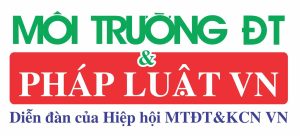
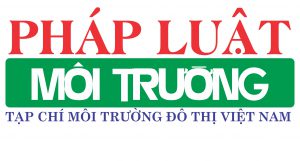
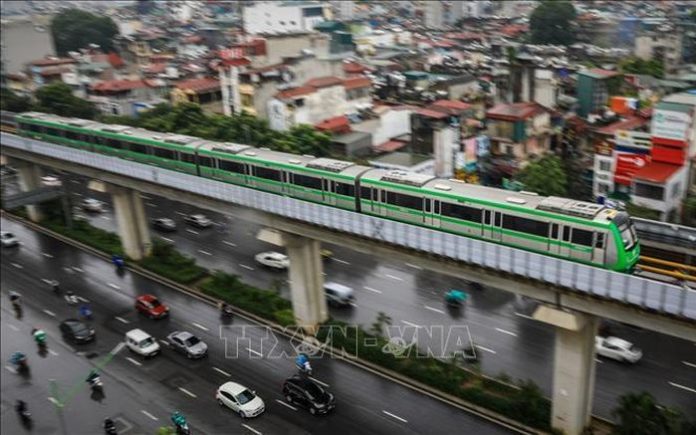
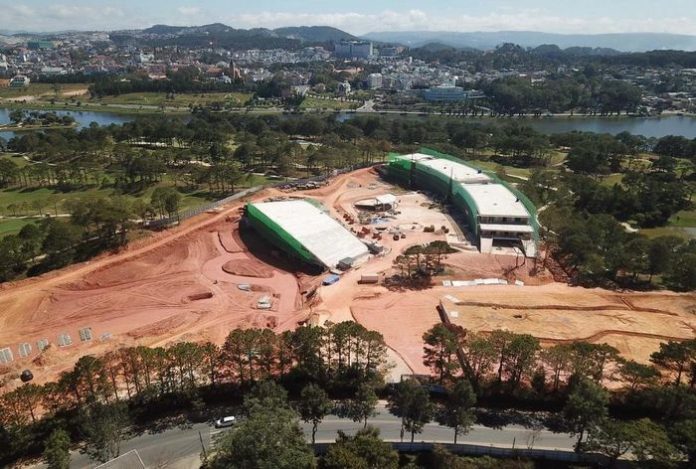
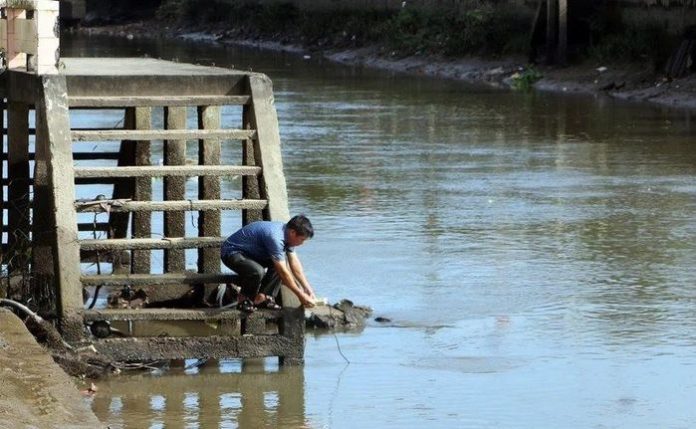
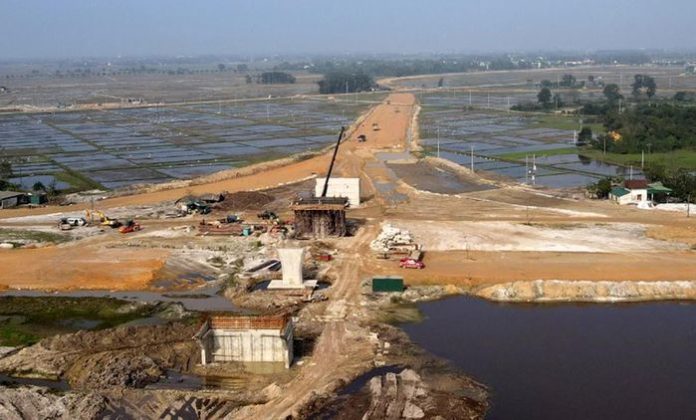
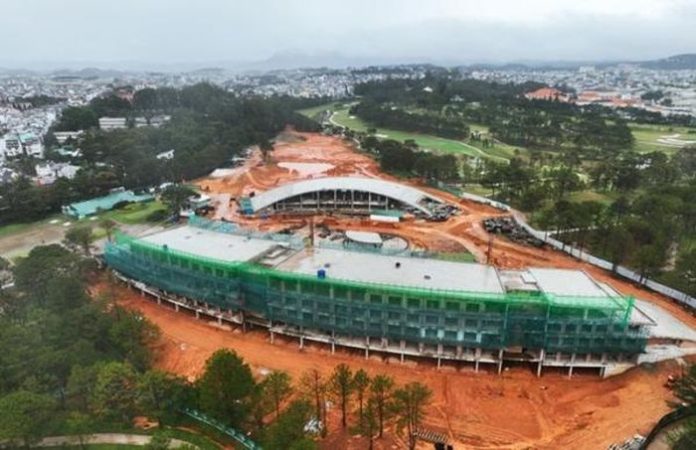
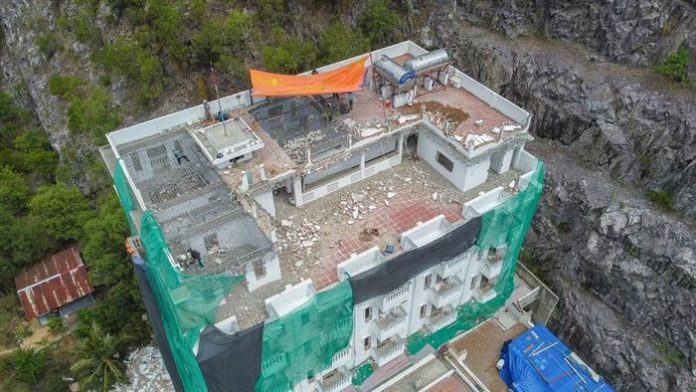
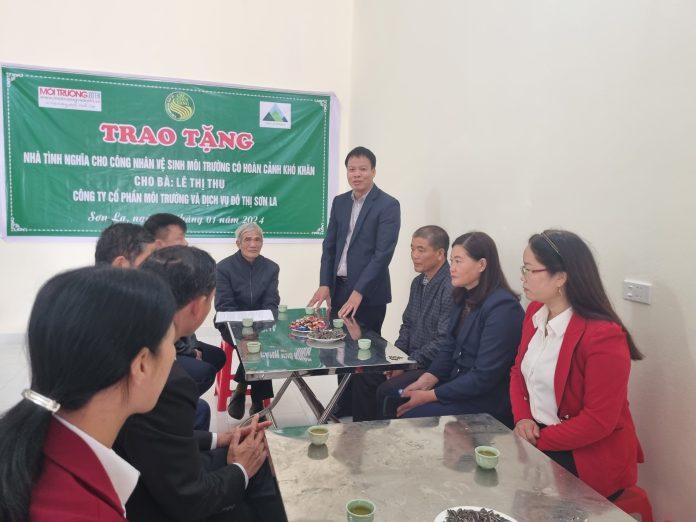
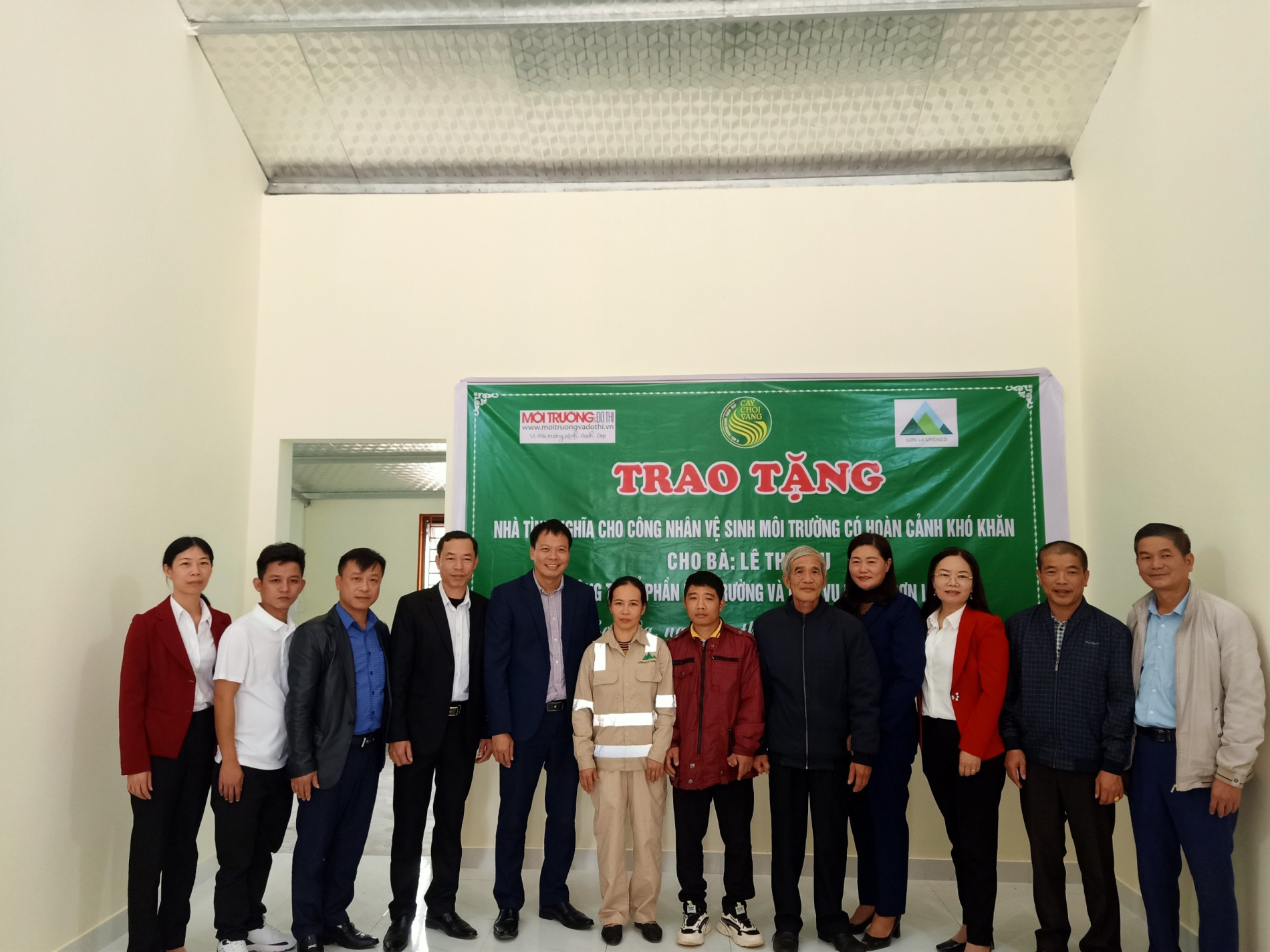
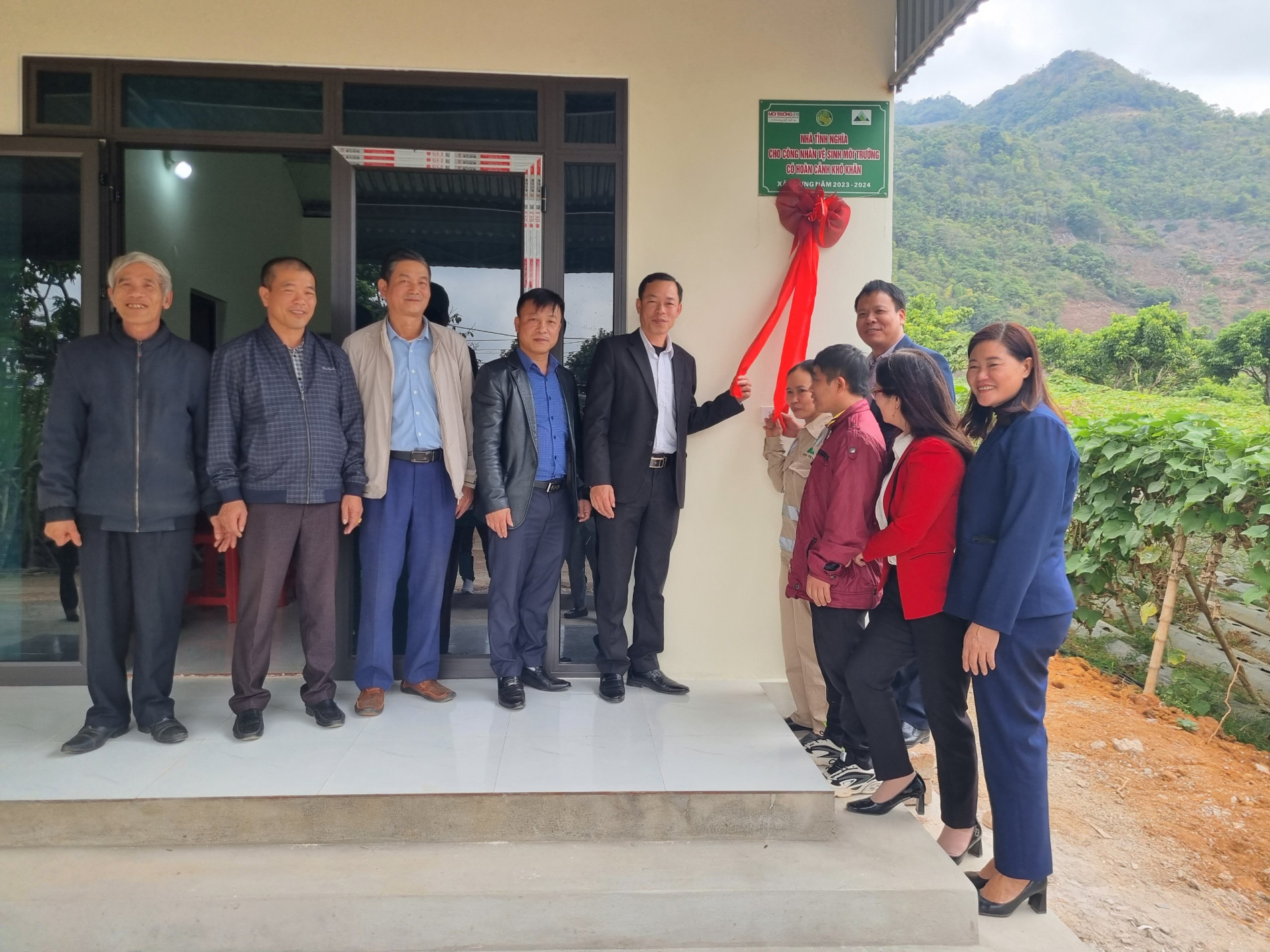
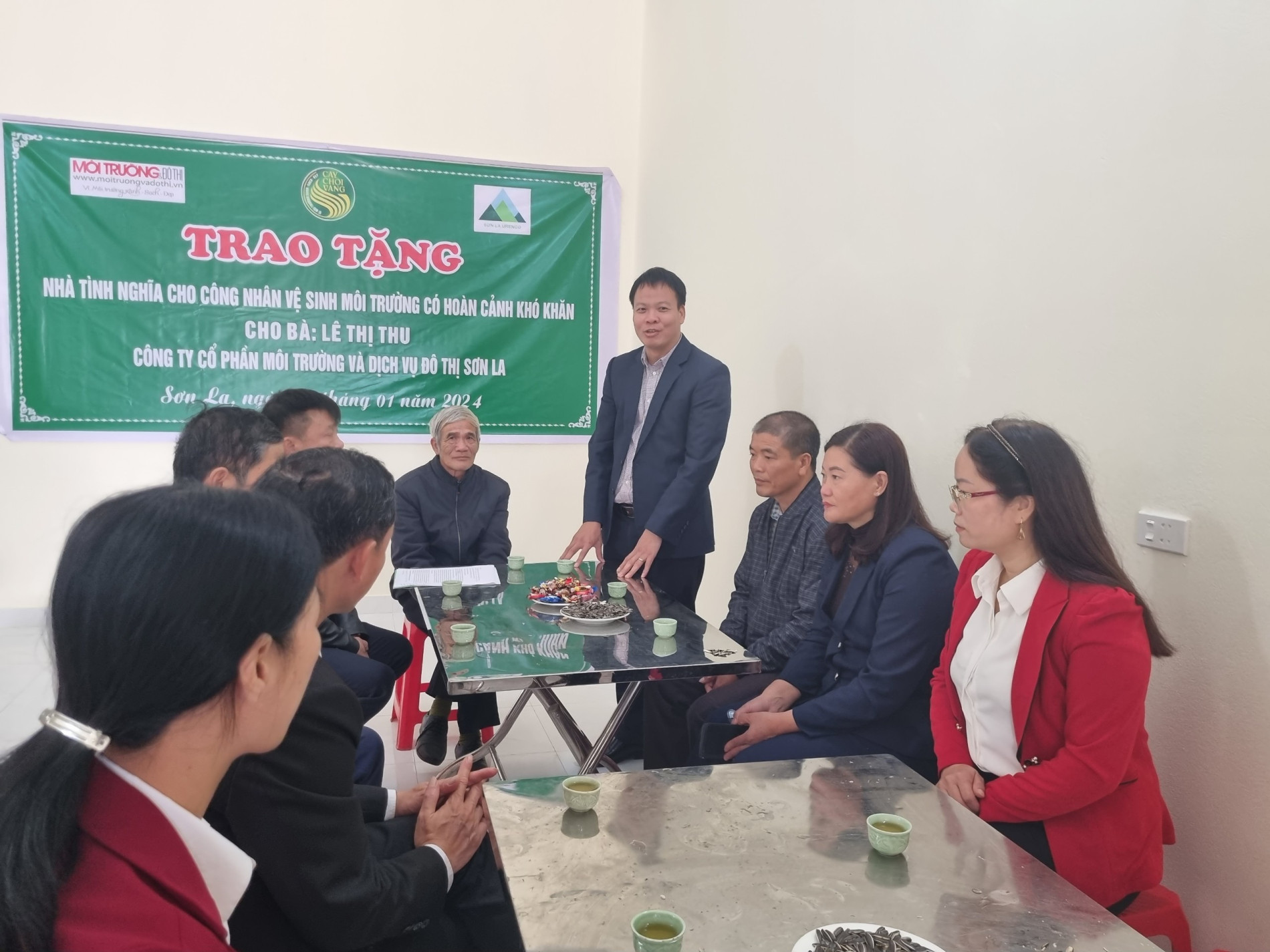
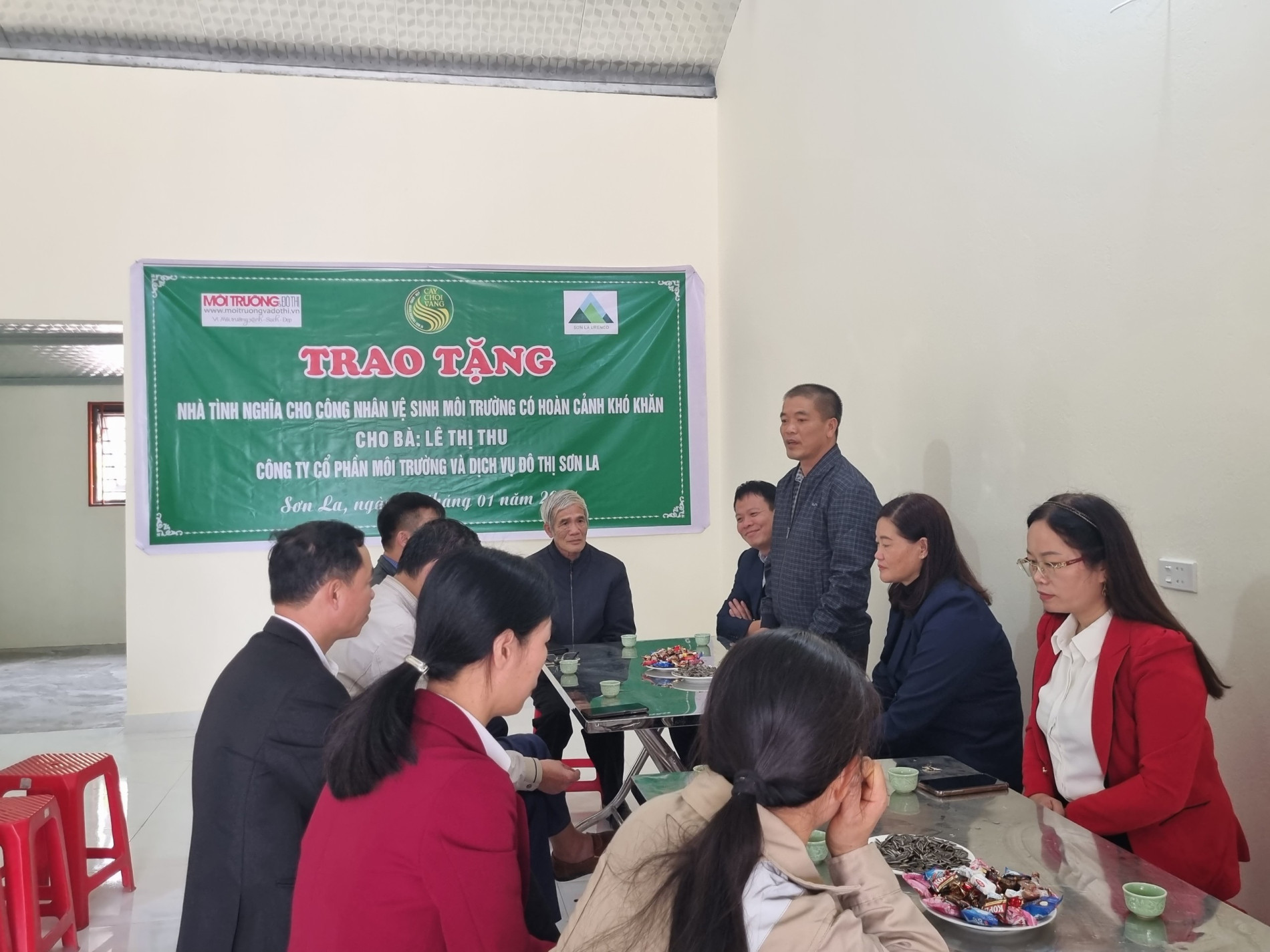
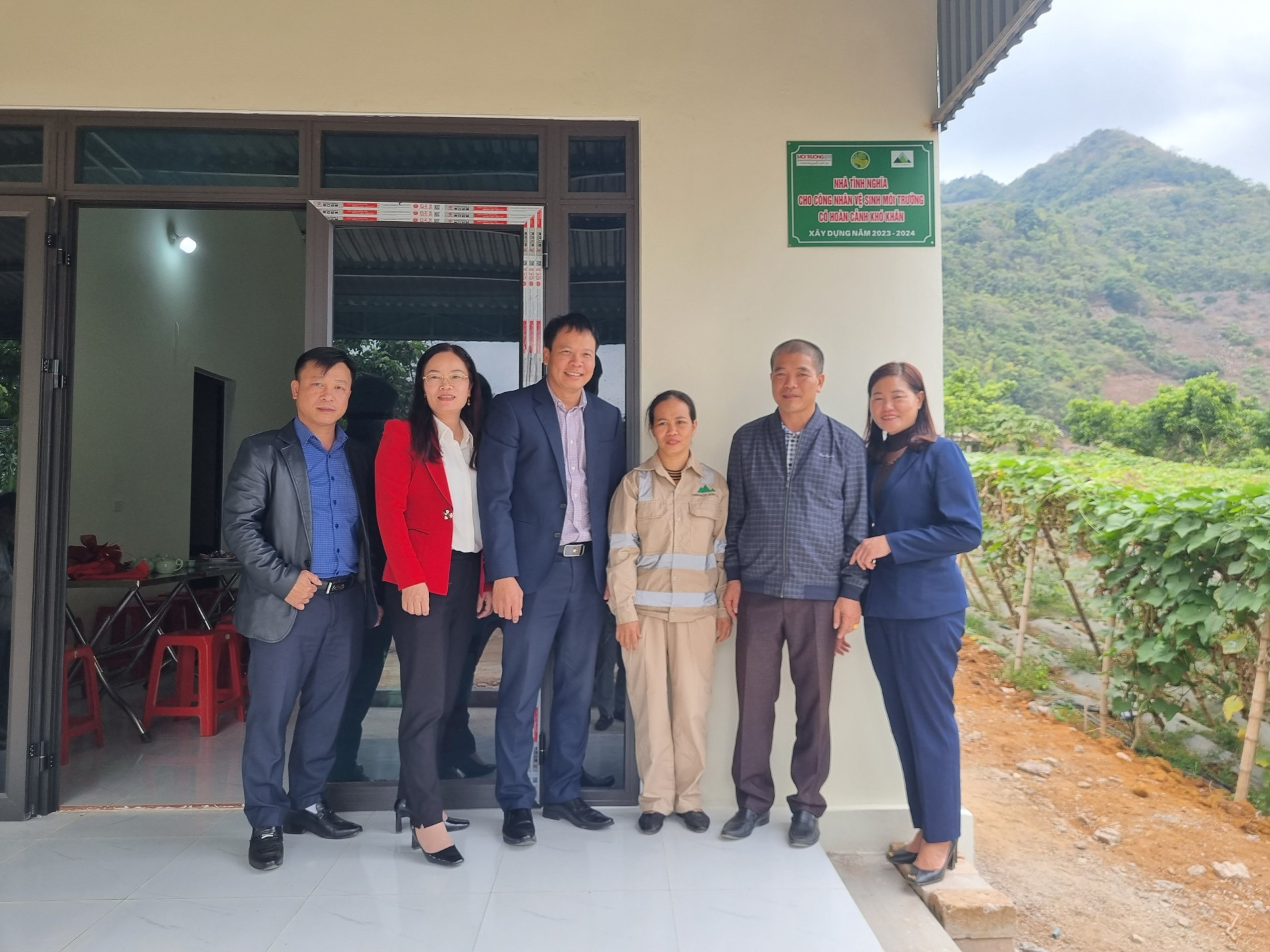


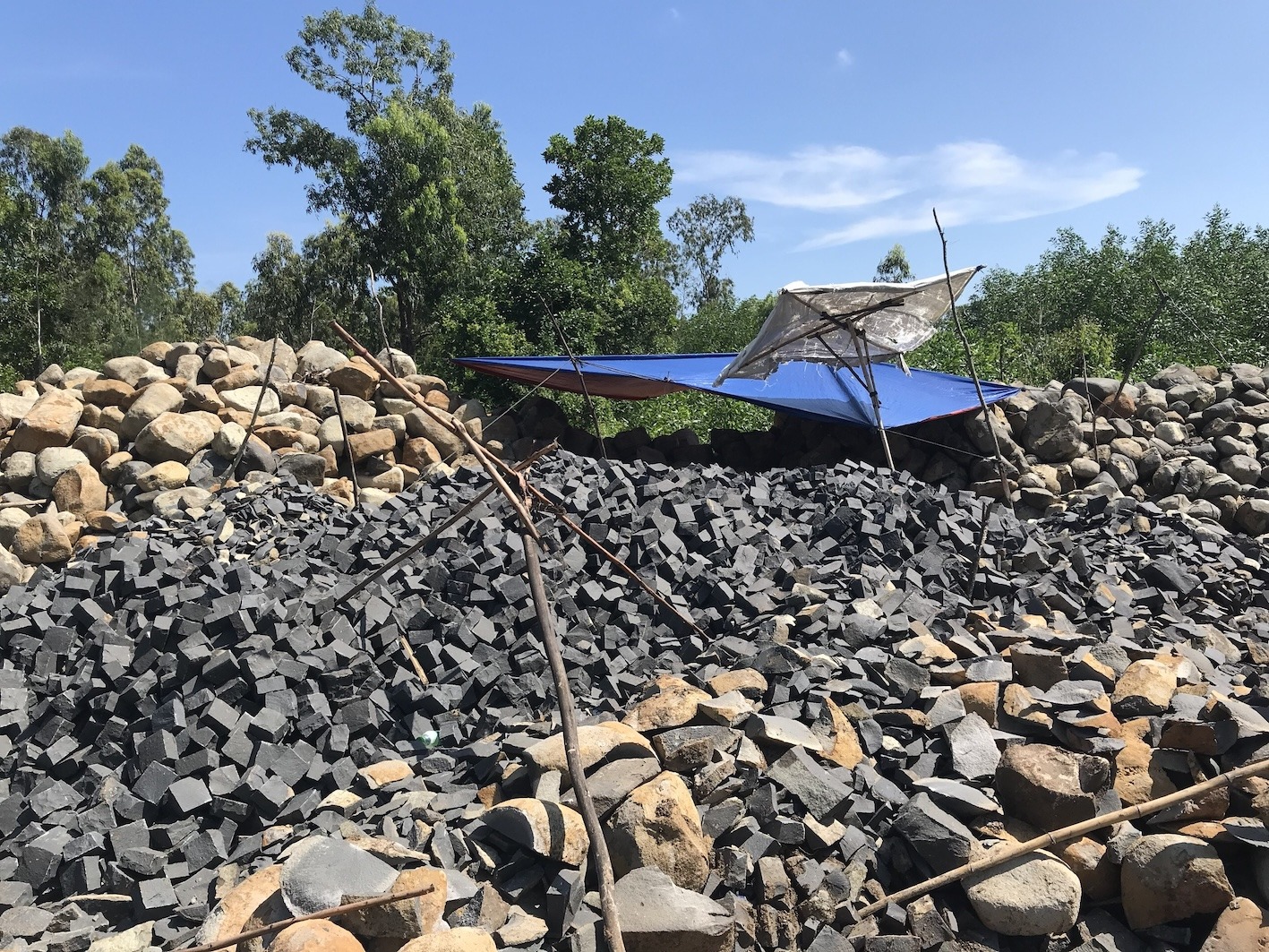

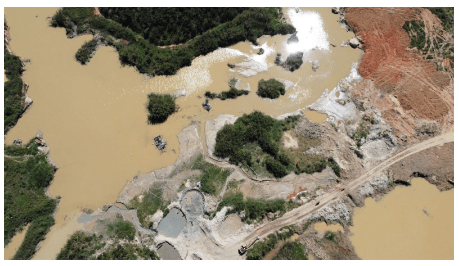
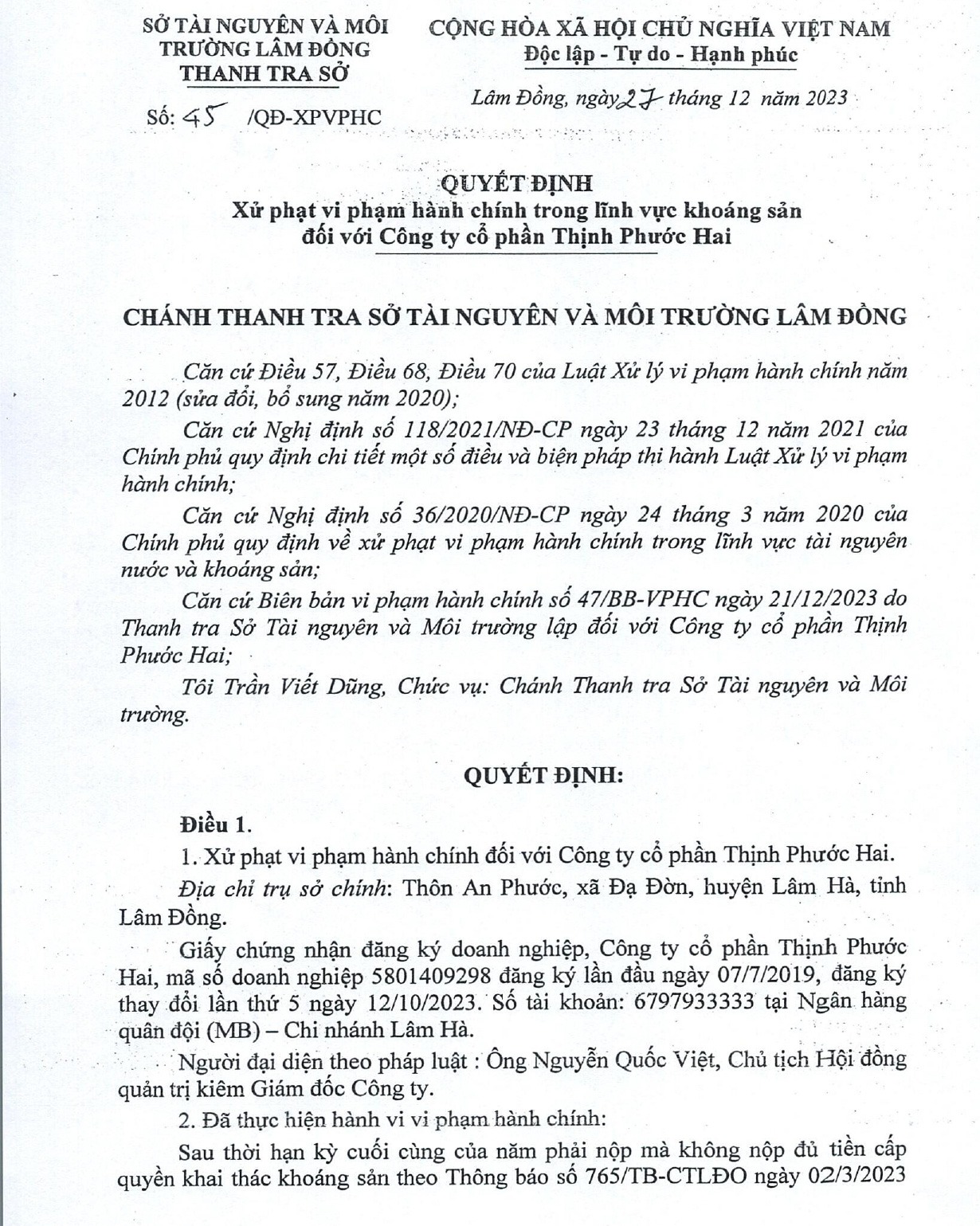

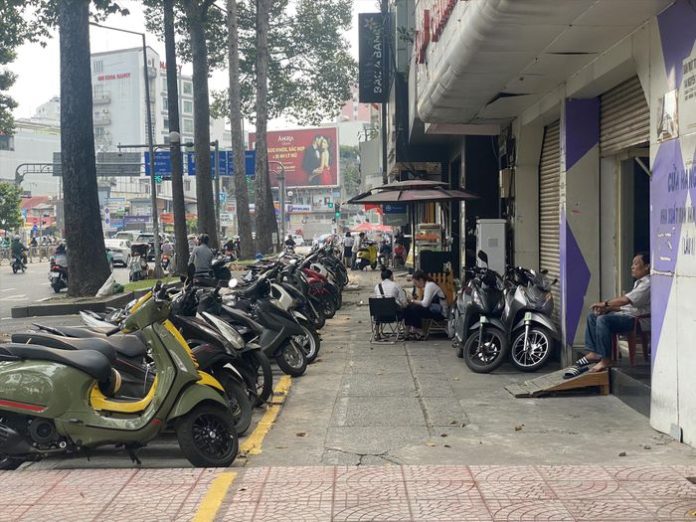

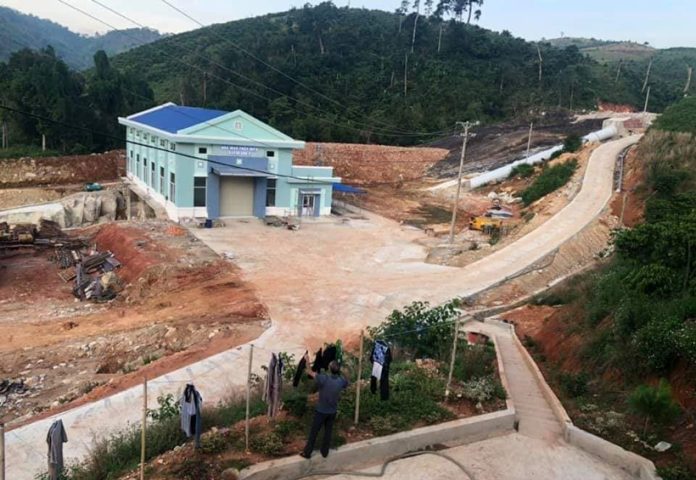
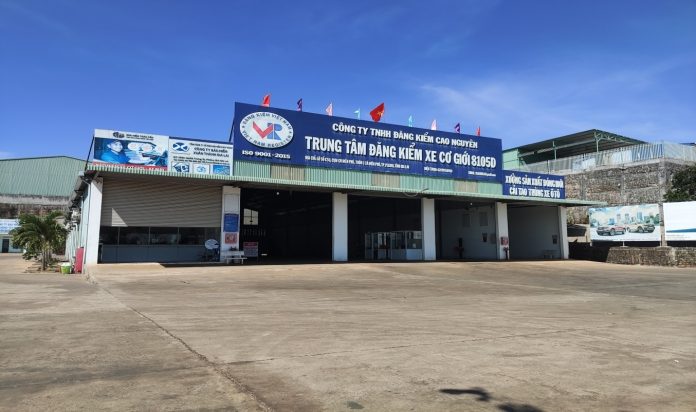
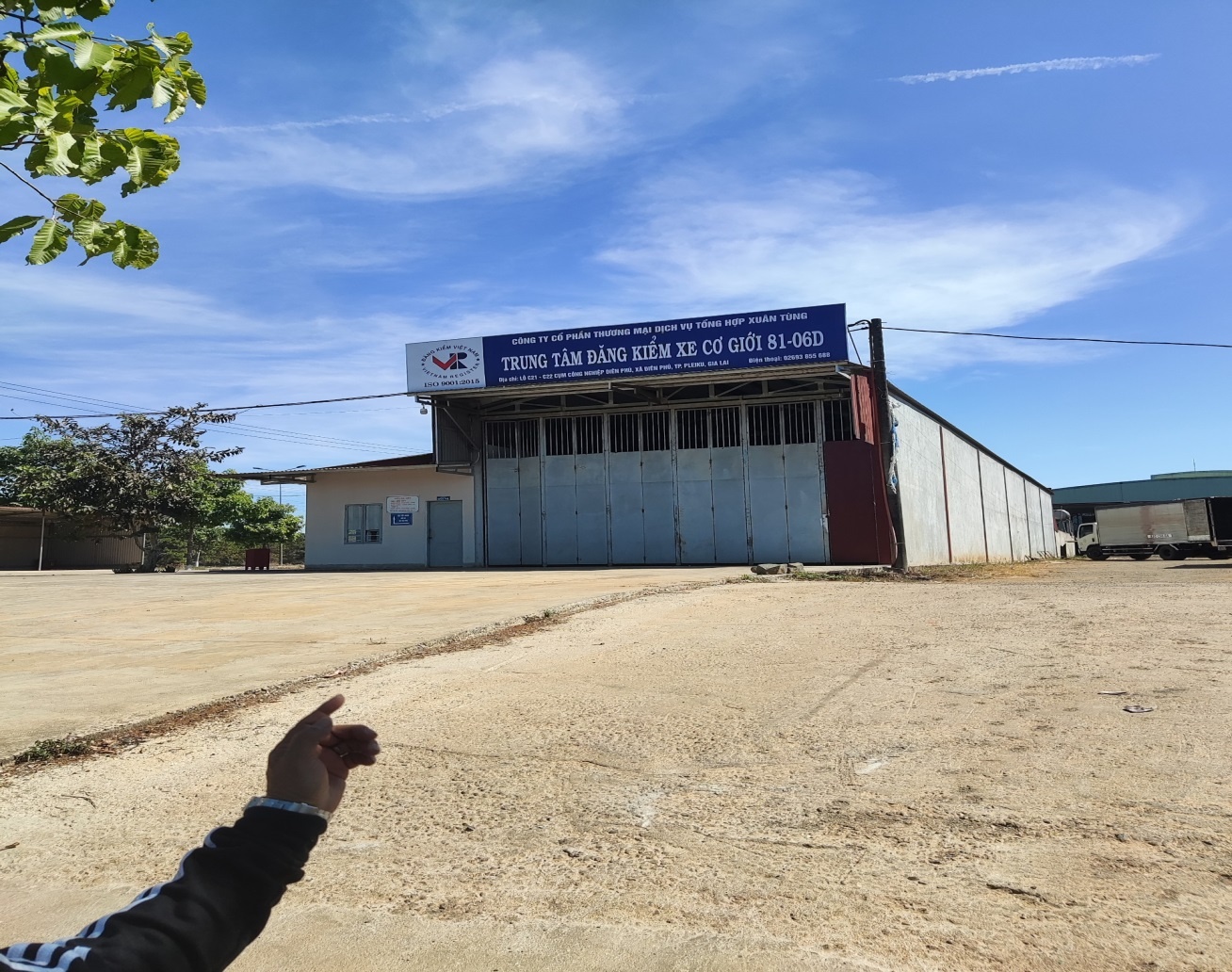
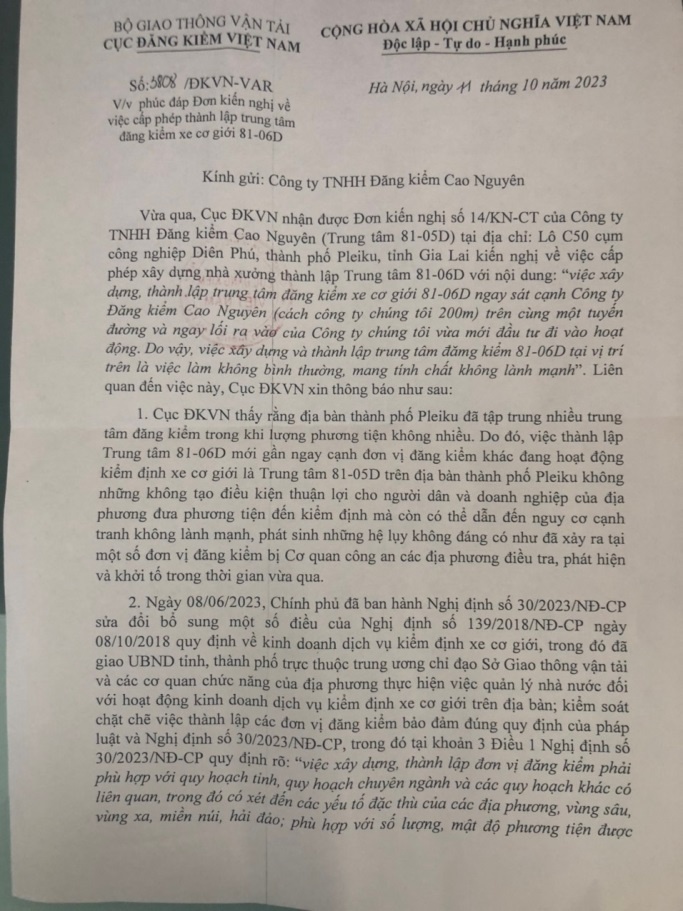
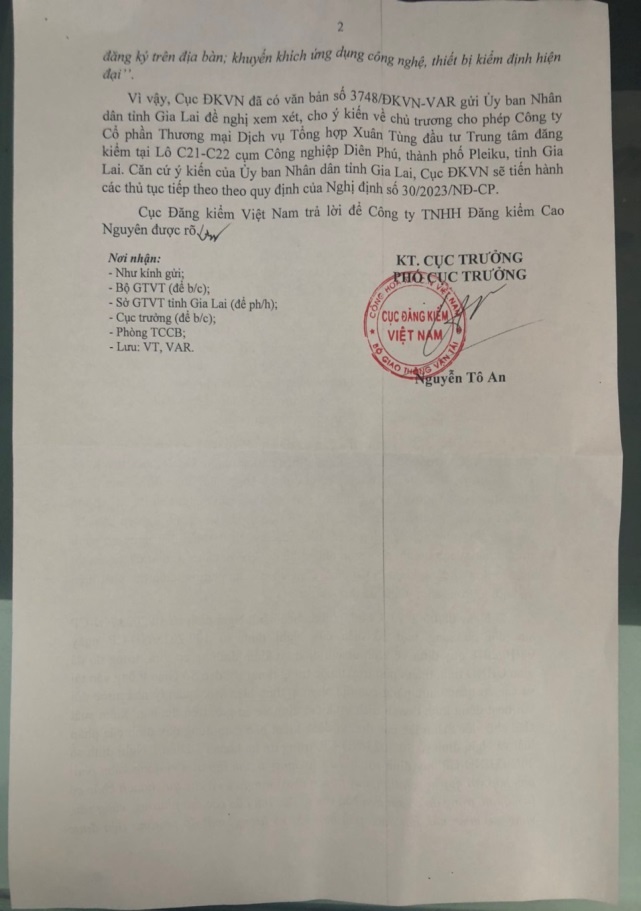
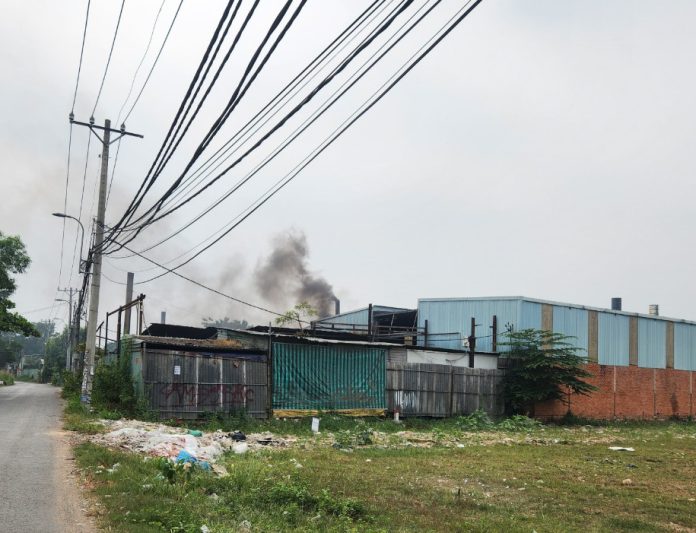
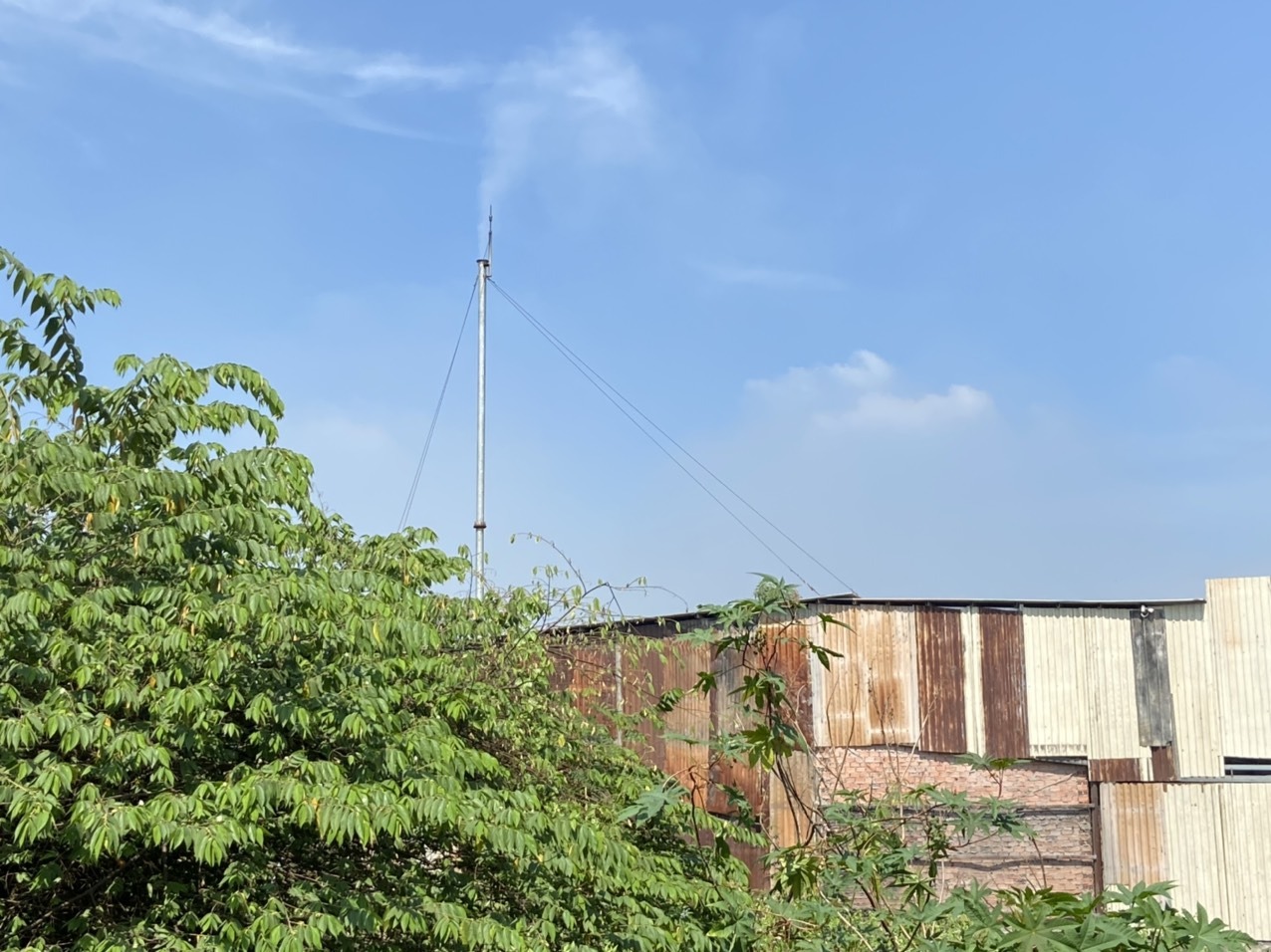
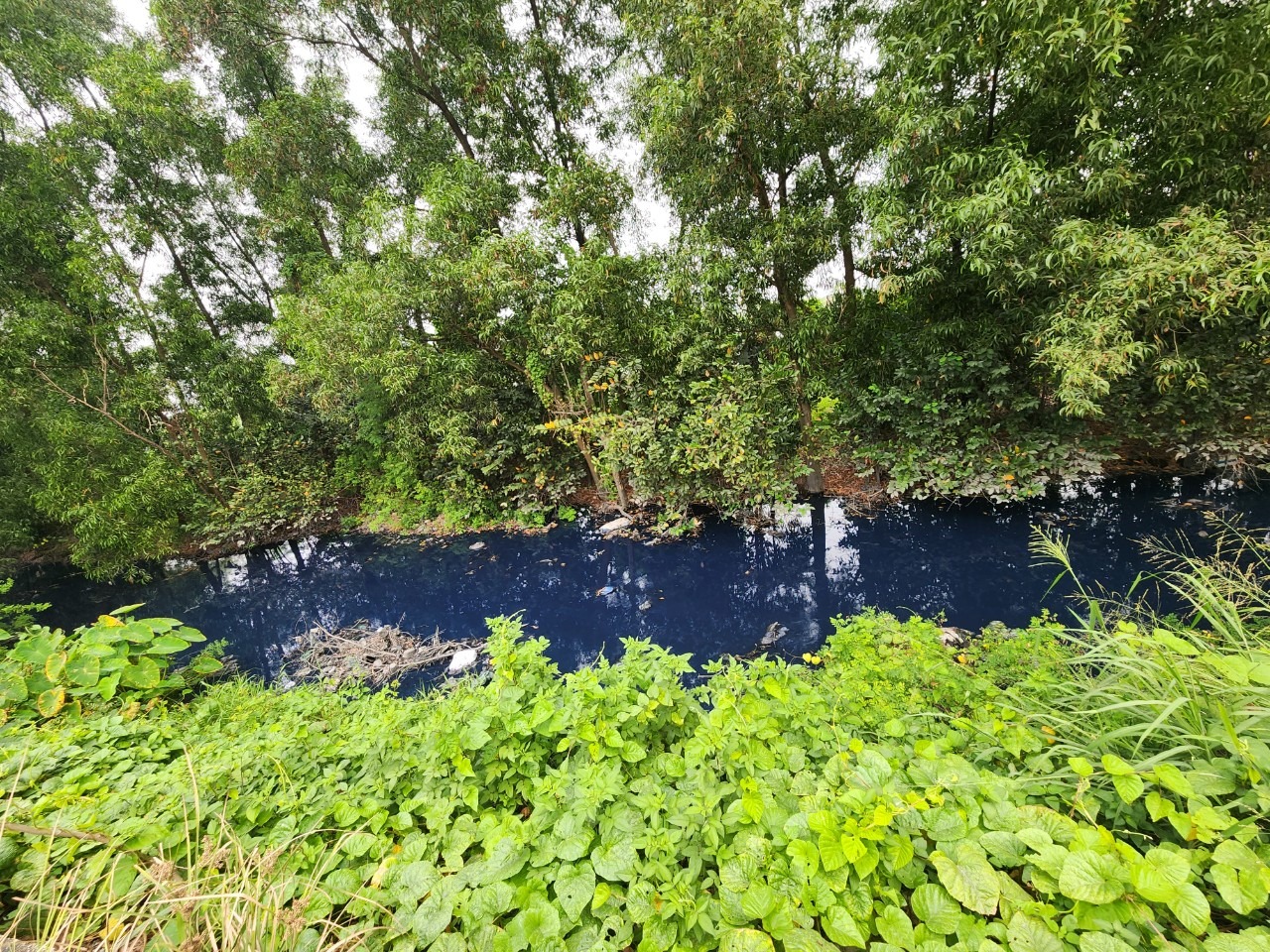

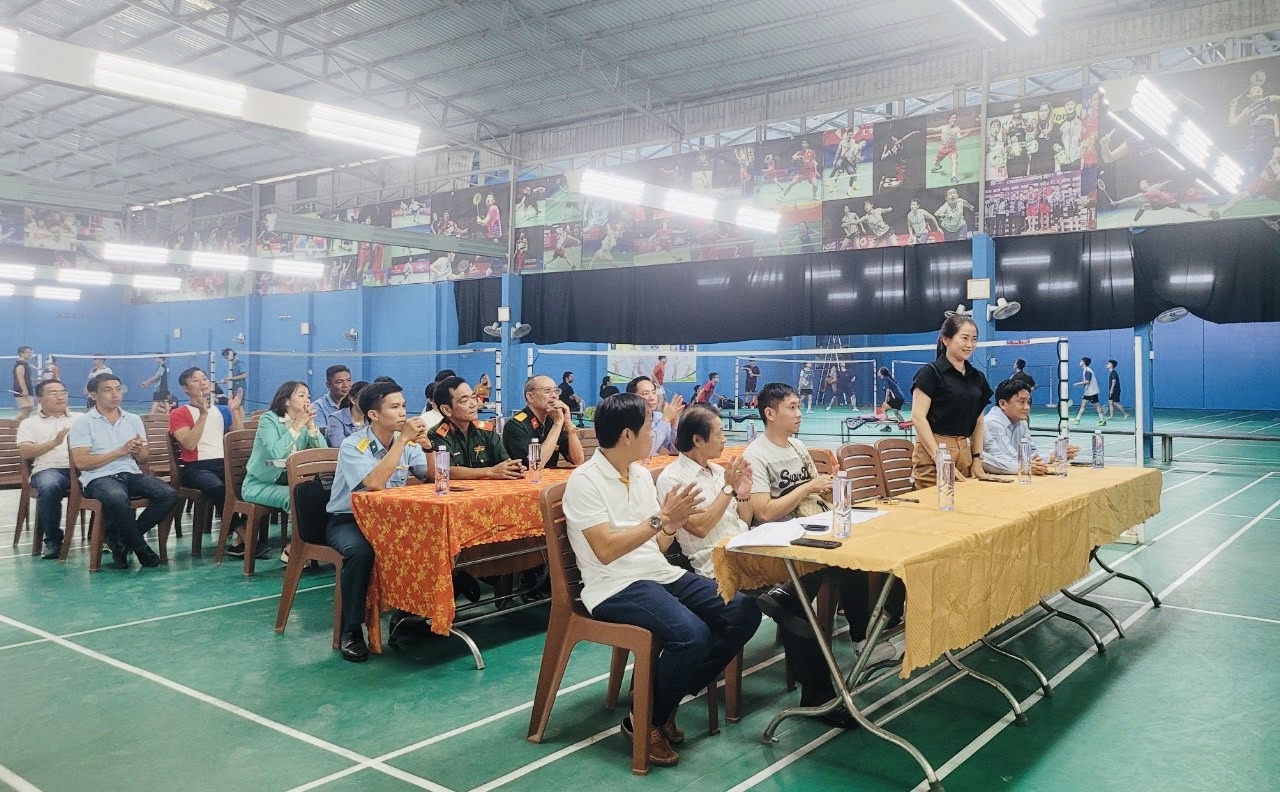 Các đại biểu tham dự buổi Lễ khai mạc
Các đại biểu tham dự buổi Lễ khai mạc
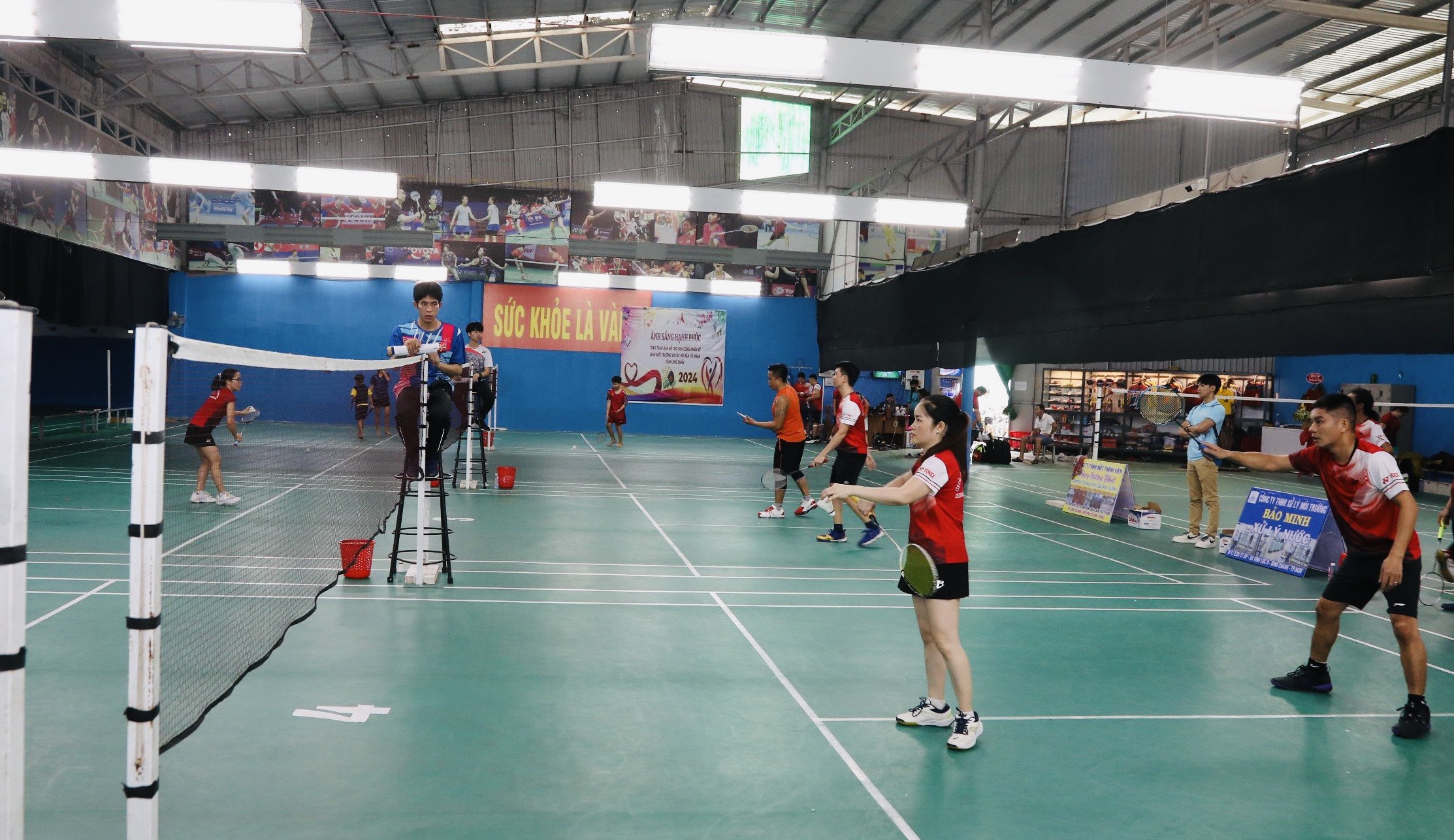
 Các trận đấu căng thẳng và đầy kịch tính được diễn ra tại giải đấu
Các trận đấu căng thẳng và đầy kịch tính được diễn ra tại giải đấu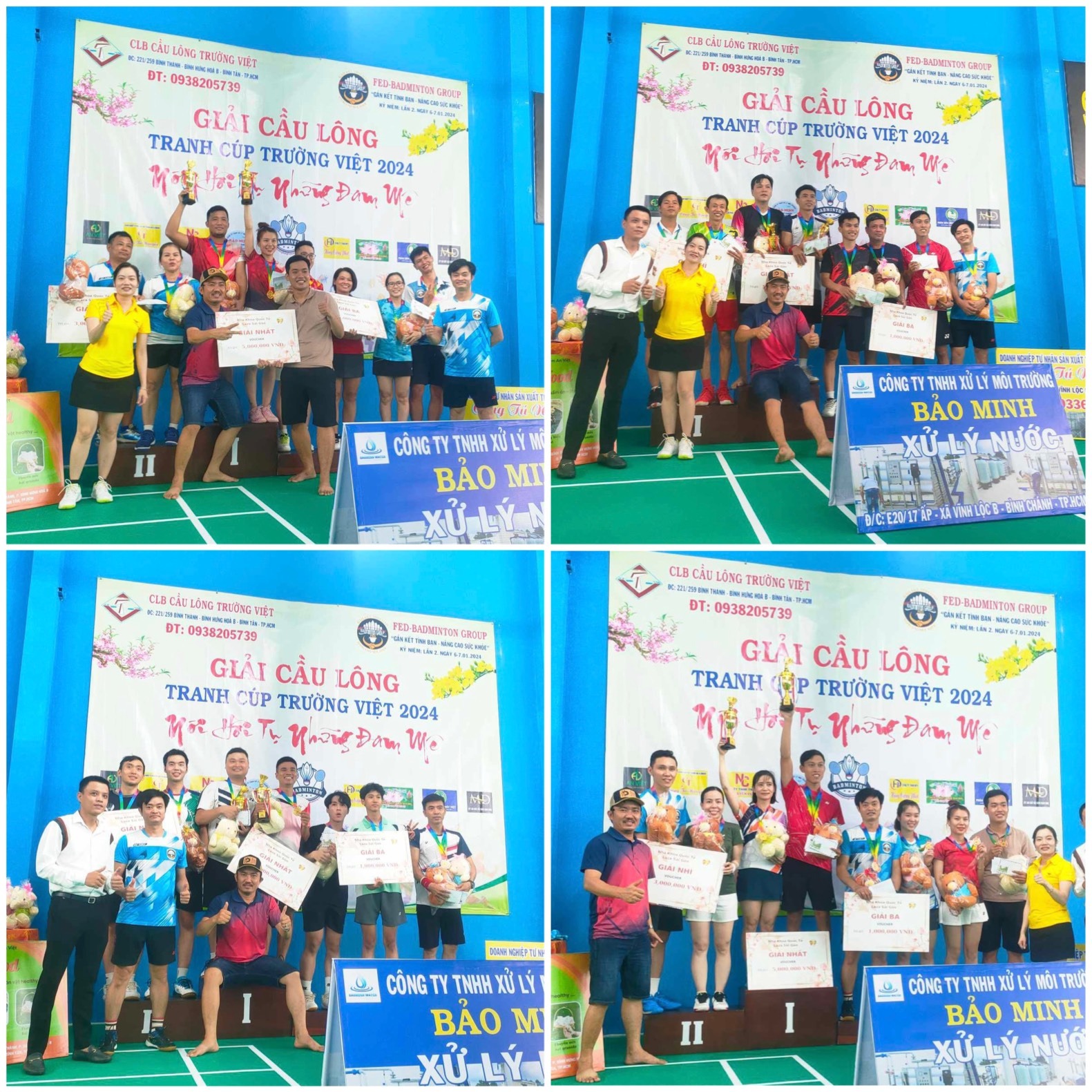 Lễ bế mạc và trao giải thưởng đến các đội đạt thành tích cao tại Giải đấu
Lễ bế mạc và trao giải thưởng đến các đội đạt thành tích cao tại Giải đấu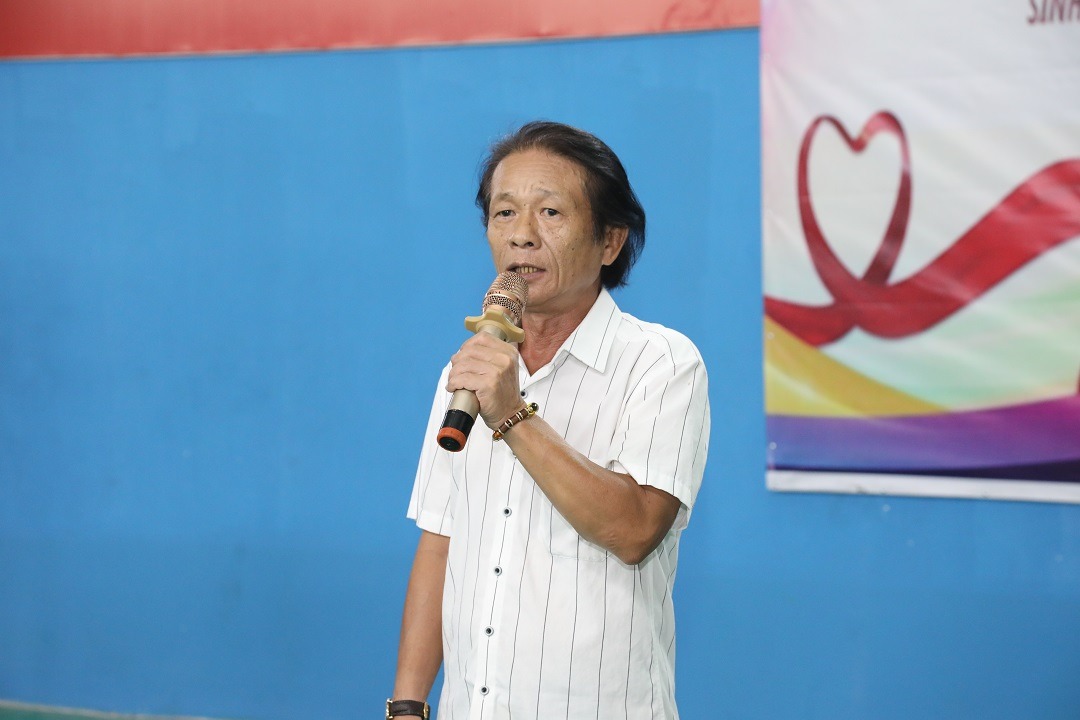 Nhà báo Lê Hải – Trưởng Văn phòng đại diện Tạp chí Môi trường & Đô thị Việt Nam tại TP.HCM phát biểu trong Chương trình trao quà tặng.
Nhà báo Lê Hải – Trưởng Văn phòng đại diện Tạp chí Môi trường & Đô thị Việt Nam tại TP.HCM phát biểu trong Chương trình trao quà tặng.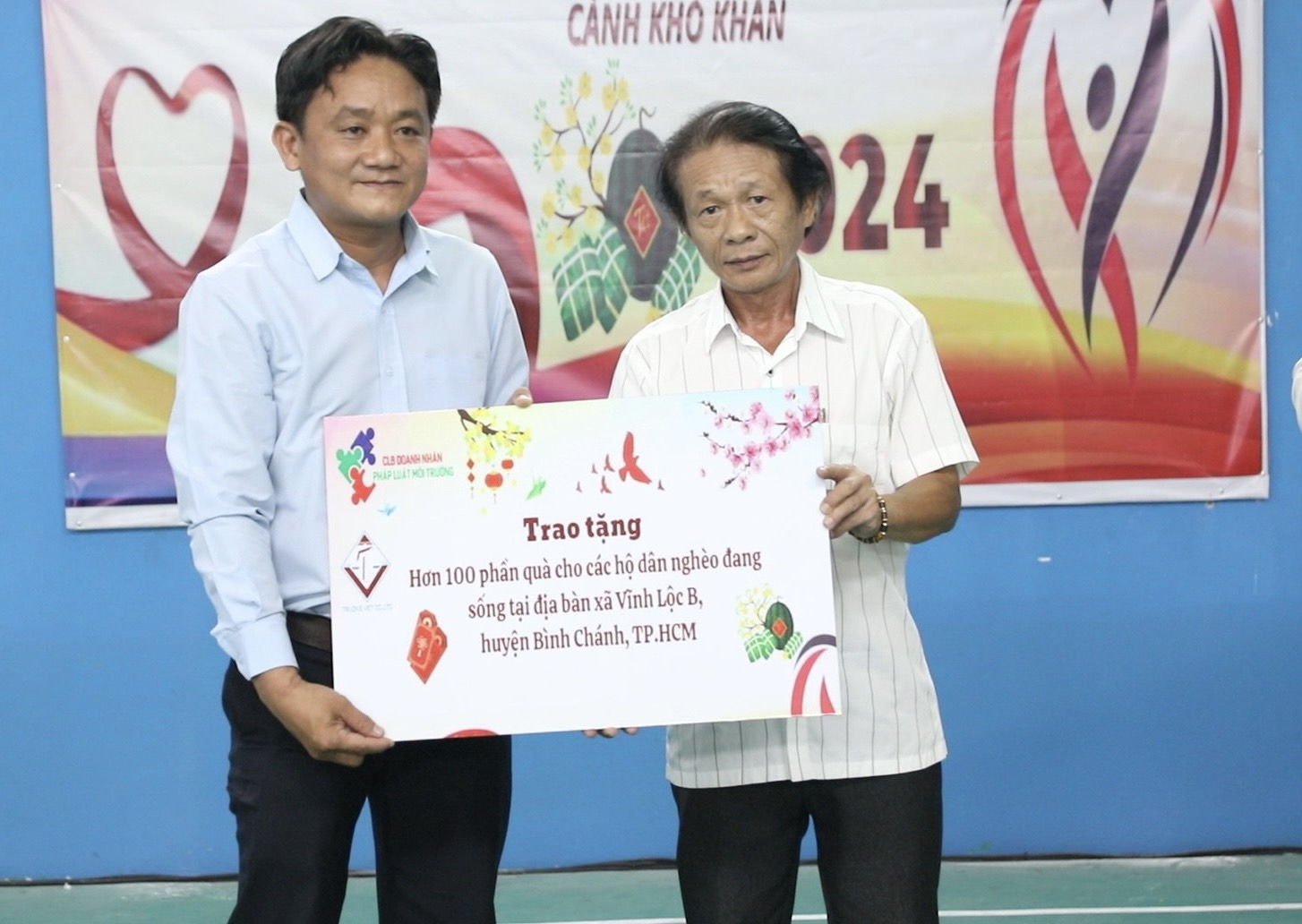 Ông Trương Công Minh – Chủ tịch UBMTTQVN xã Vĩnh Lộc B (bên trái) đại diện cho các hộ dân nghèo đang sống tại địa bàn xã Vĩnh Lộc B, huyện Bình Chánh, TP.HCM nhận hơn 100 phần quà từ Chương trình.
Ông Trương Công Minh – Chủ tịch UBMTTQVN xã Vĩnh Lộc B (bên trái) đại diện cho các hộ dân nghèo đang sống tại địa bàn xã Vĩnh Lộc B, huyện Bình Chánh, TP.HCM nhận hơn 100 phần quà từ Chương trình.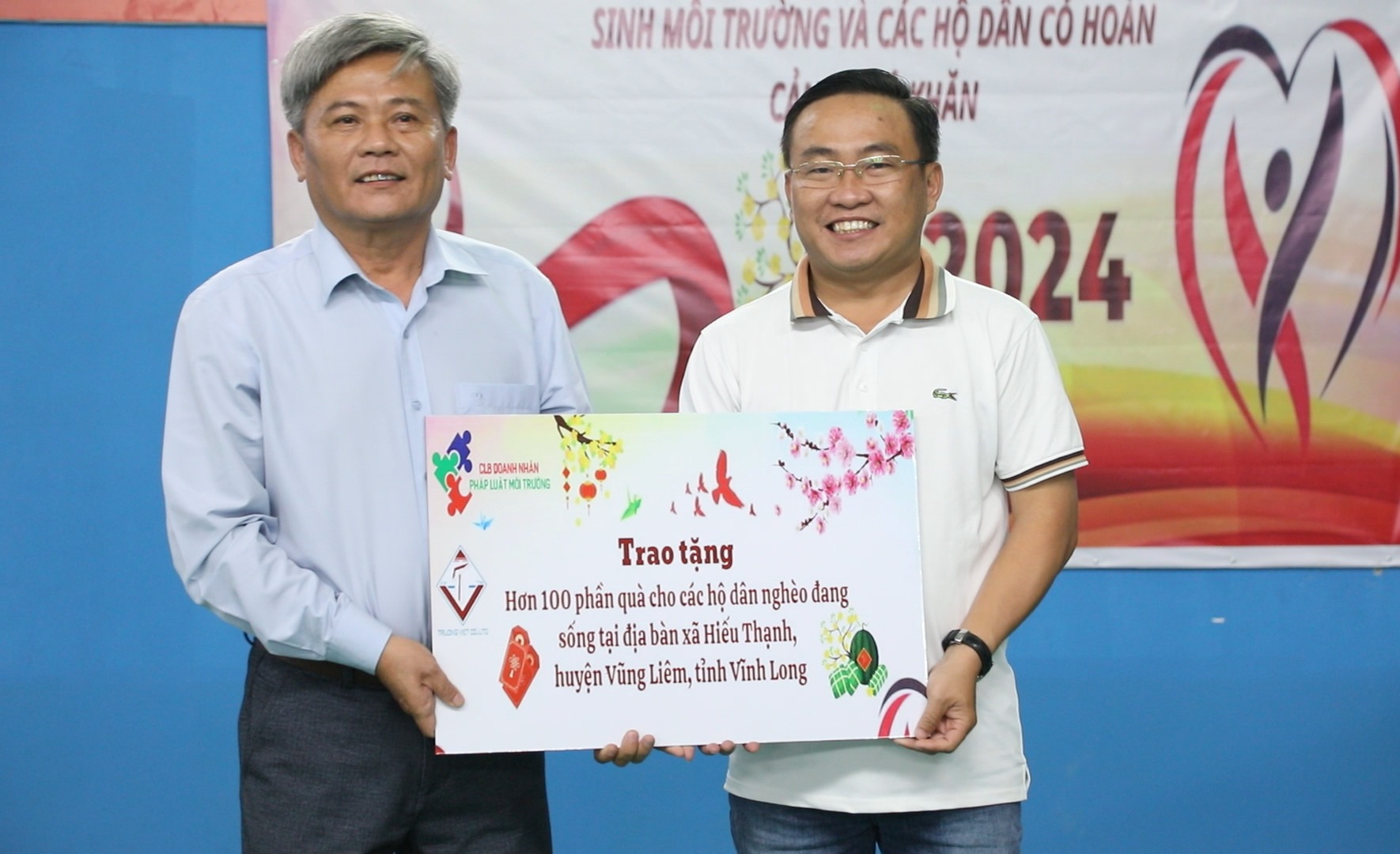 Ông Lê Vinh An – Chủ tịch UBND xã Hiếu Thạnh (bên trái), đại diện cho các hộ dân khó khăn đang sống tại xã Hiếu Thạnh, huyện Vũng Liêm, tỉnh Vĩnh Long nhận hơn 100 phần quà từ Chương trình.
Ông Lê Vinh An – Chủ tịch UBND xã Hiếu Thạnh (bên trái), đại diện cho các hộ dân khó khăn đang sống tại xã Hiếu Thạnh, huyện Vũng Liêm, tỉnh Vĩnh Long nhận hơn 100 phần quà từ Chương trình.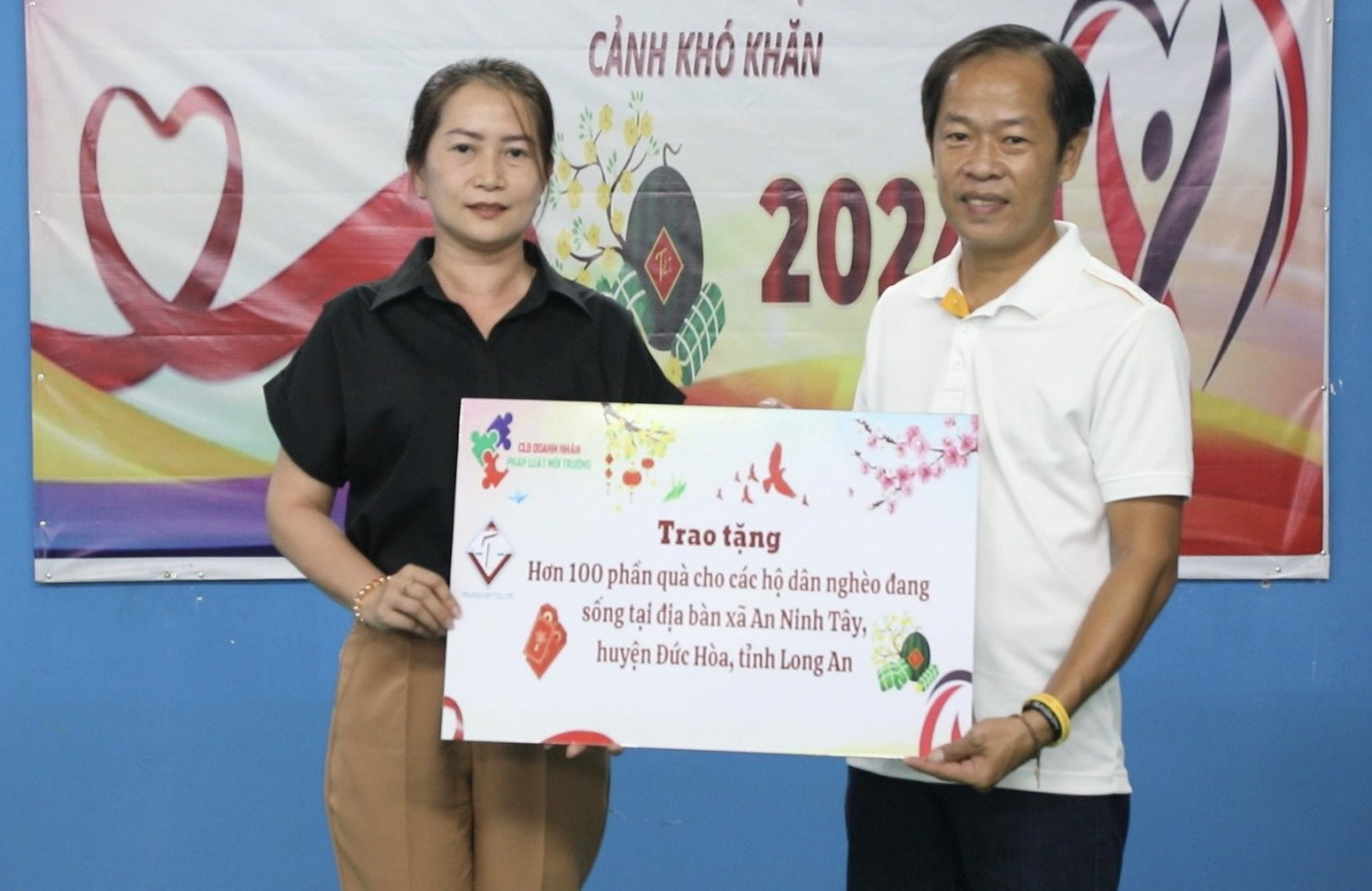 Bà Võ Thị Kim Loan – Phó Chủ tịch UBND xã An Ninh Tây (bên trái) đại diện cho các hộ dân có hoàn cảnh khó khăn đang sống tại địa bàn xã An Ninh Tây, huyện Đức Hòa, tỉnh Long An nhận hơn 100 phần quà từ Chương trình.
Bà Võ Thị Kim Loan – Phó Chủ tịch UBND xã An Ninh Tây (bên trái) đại diện cho các hộ dân có hoàn cảnh khó khăn đang sống tại địa bàn xã An Ninh Tây, huyện Đức Hòa, tỉnh Long An nhận hơn 100 phần quà từ Chương trình.